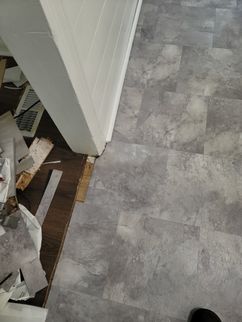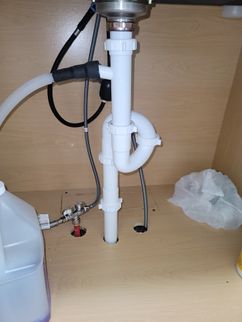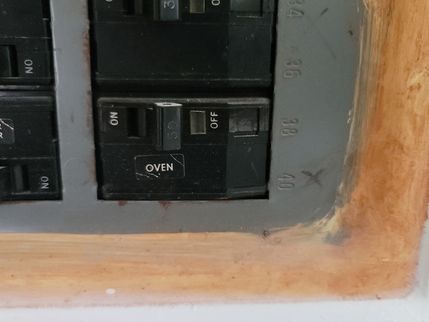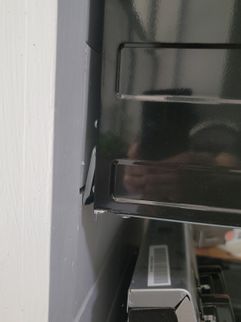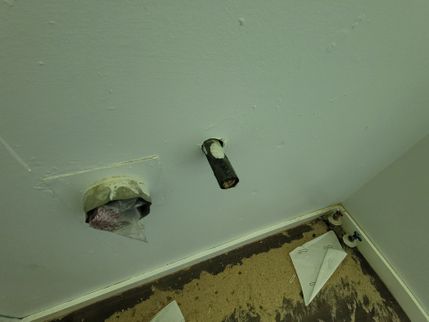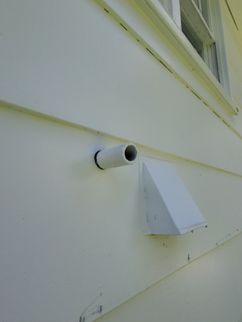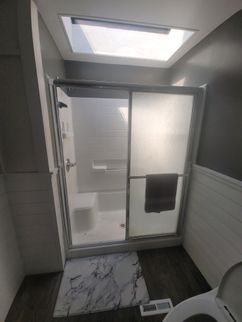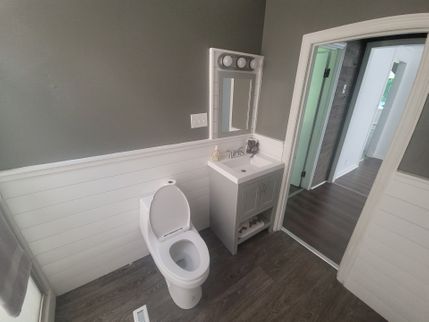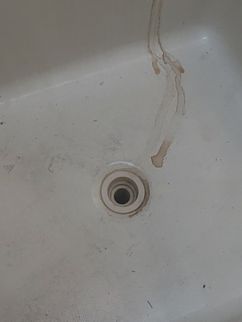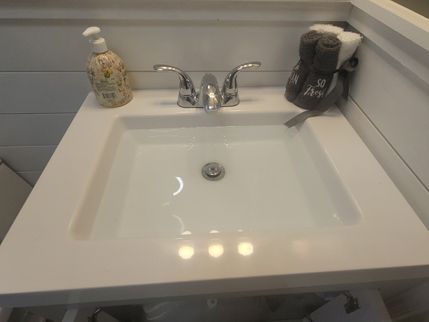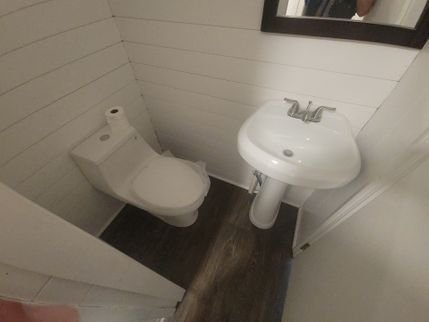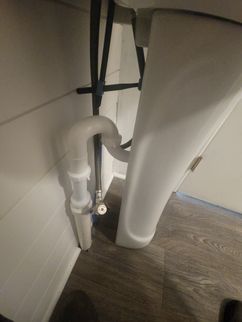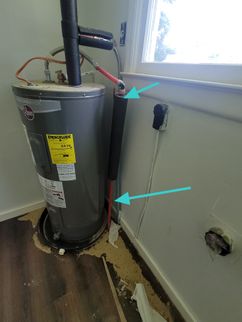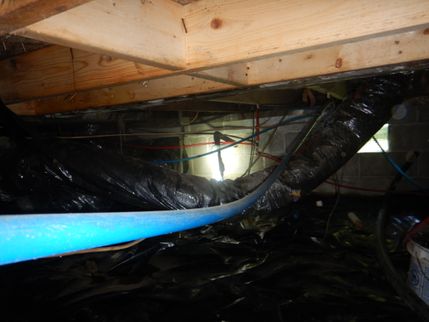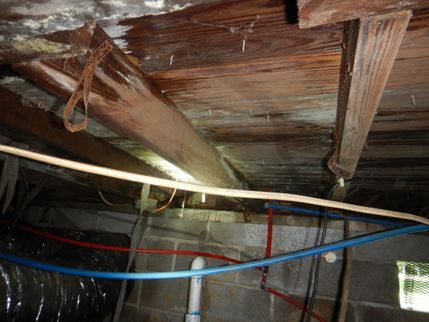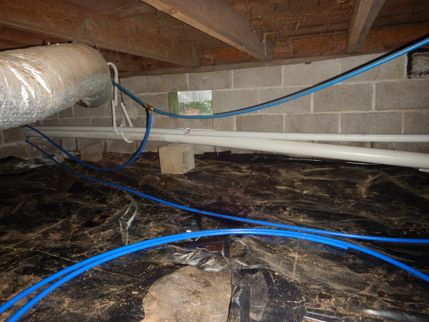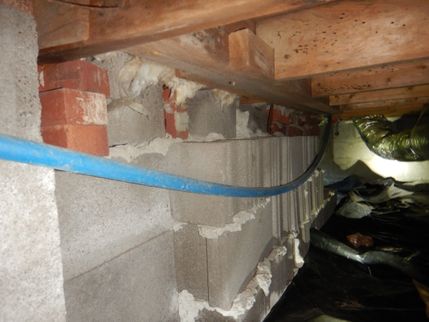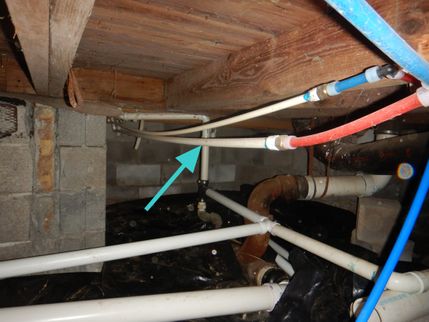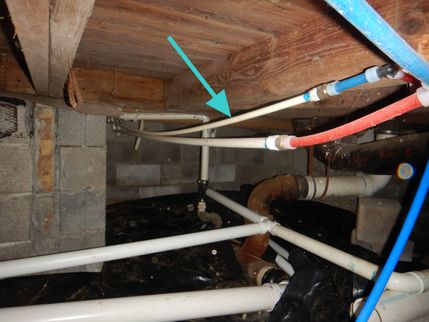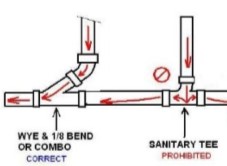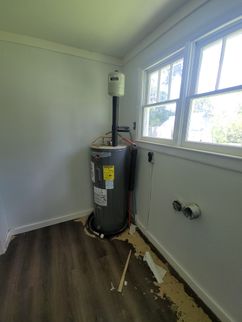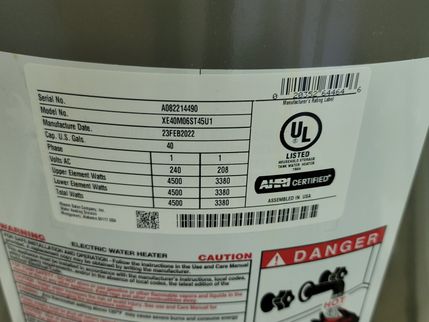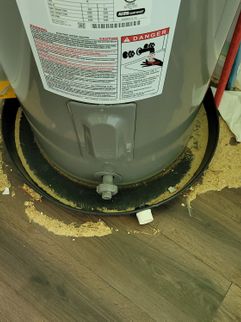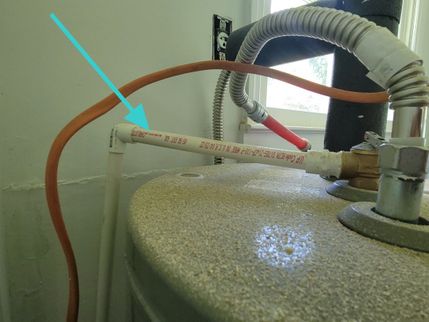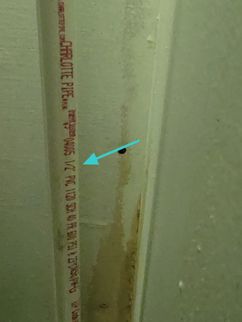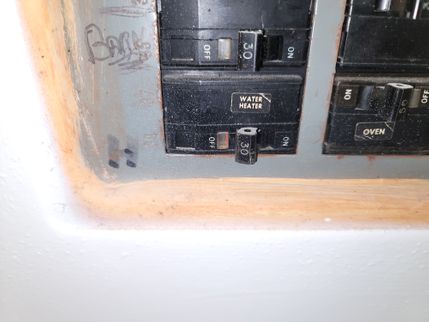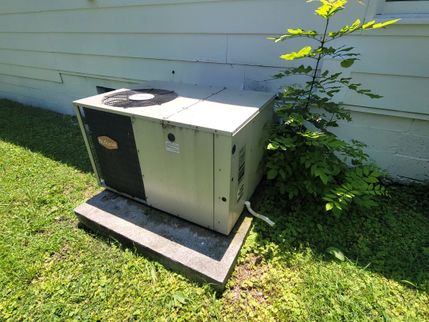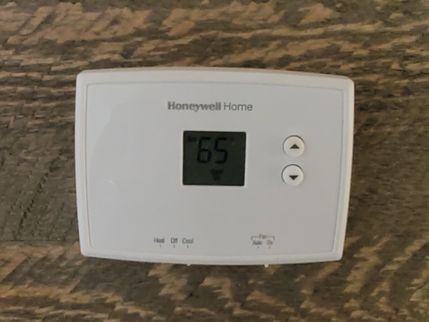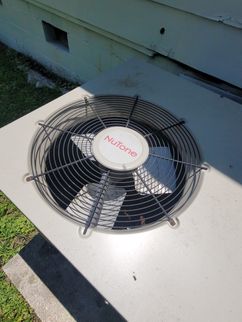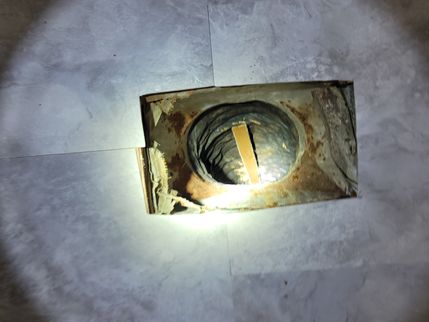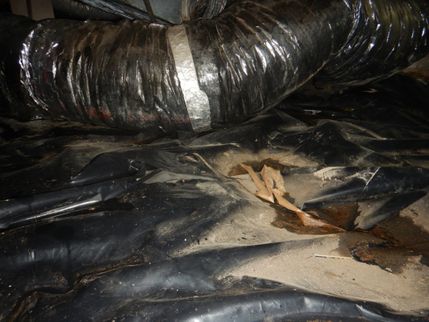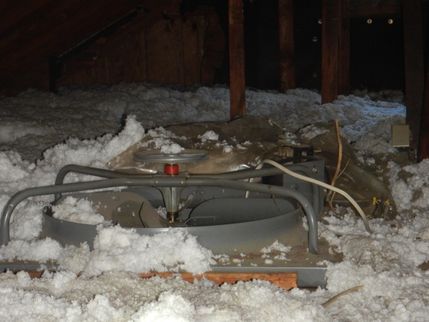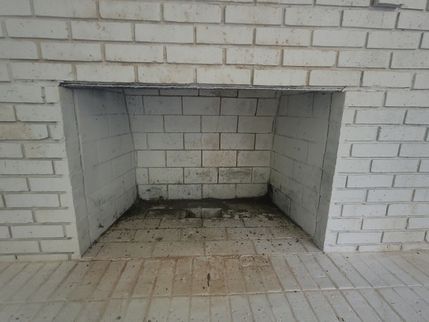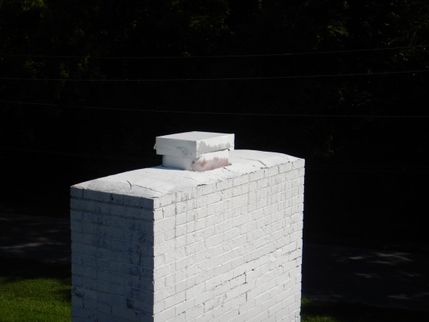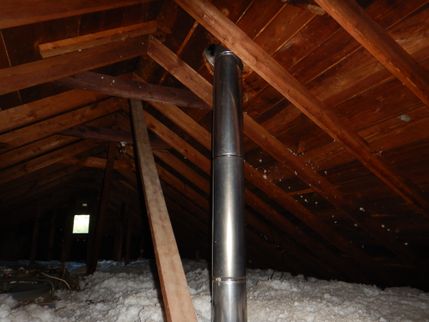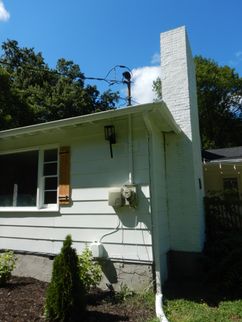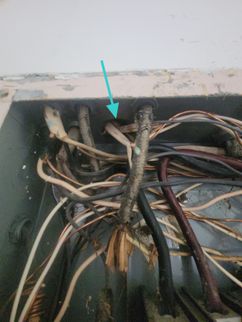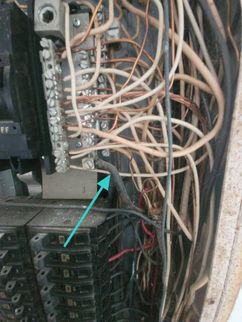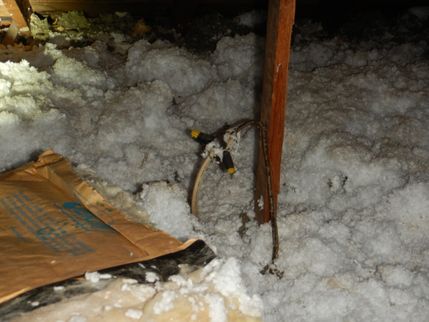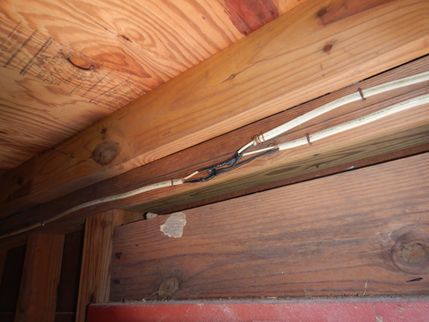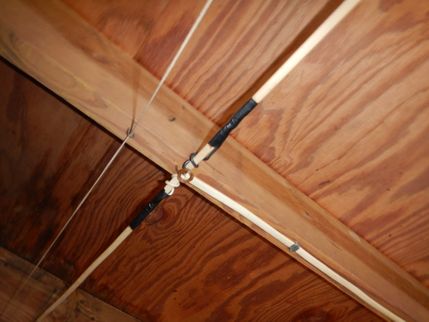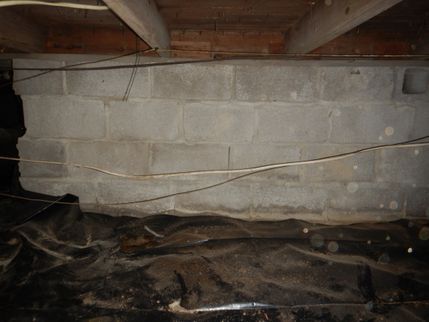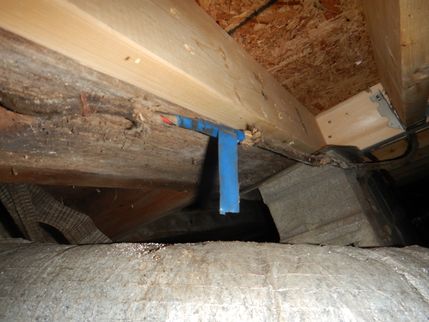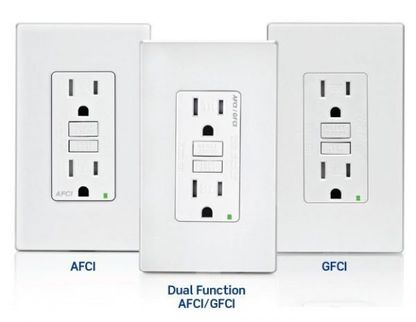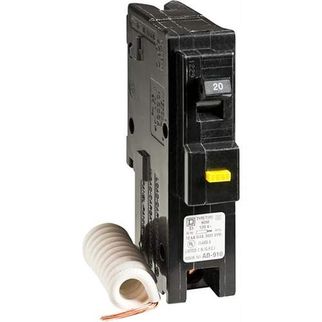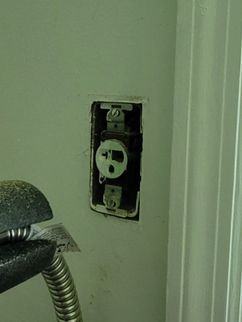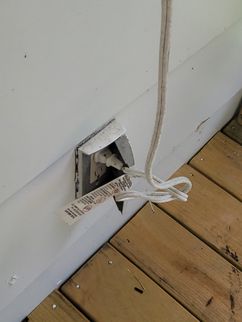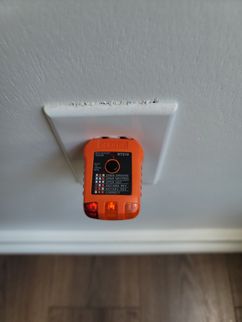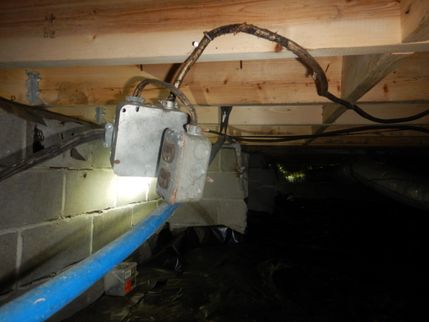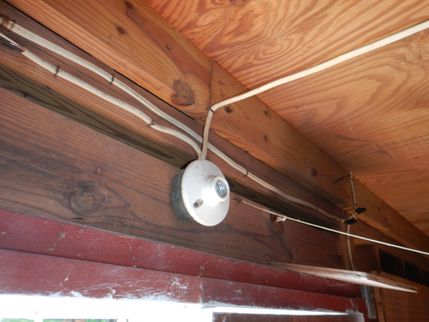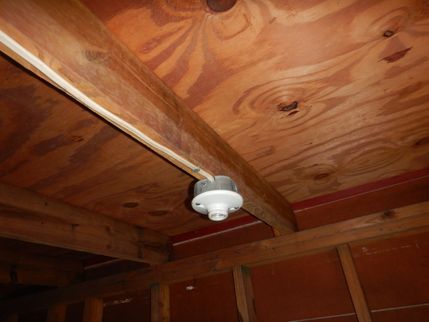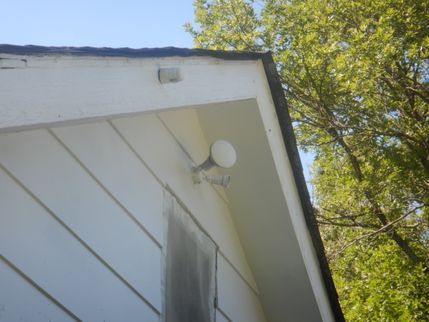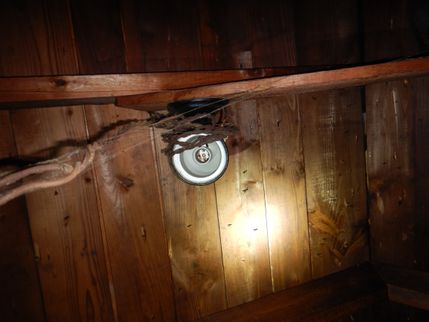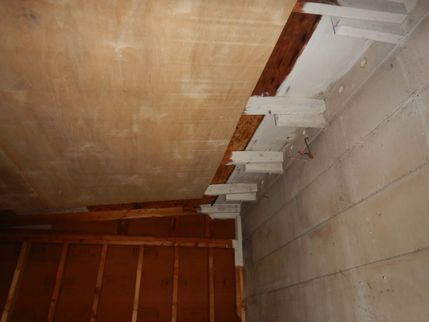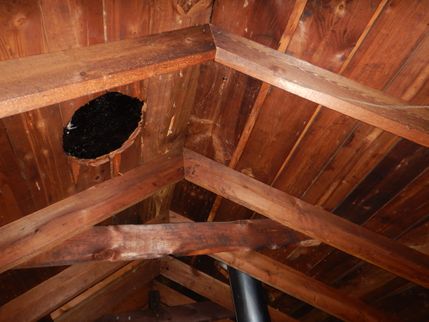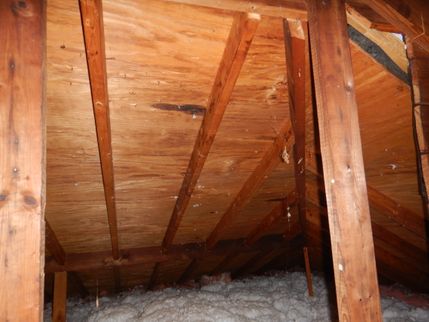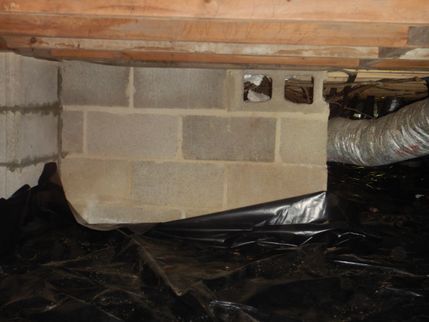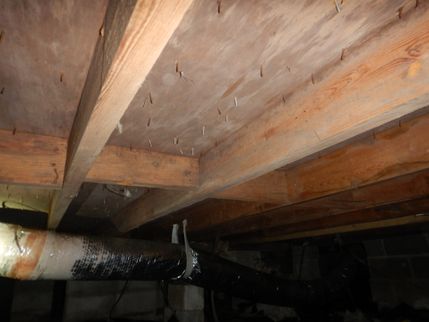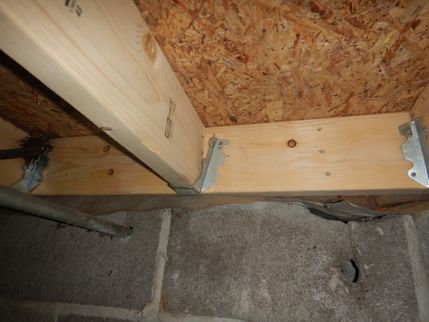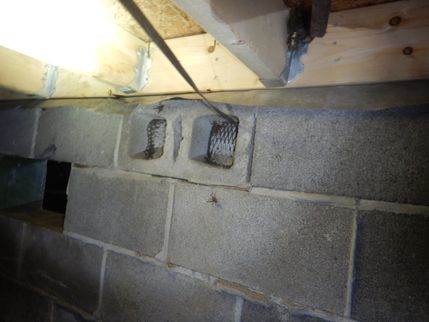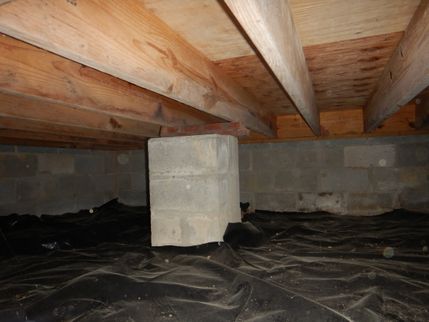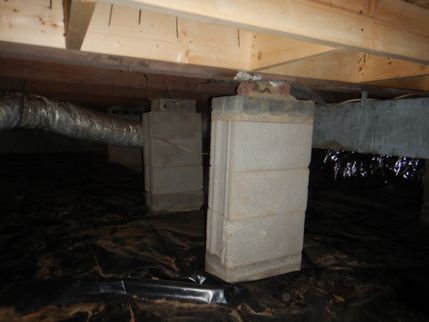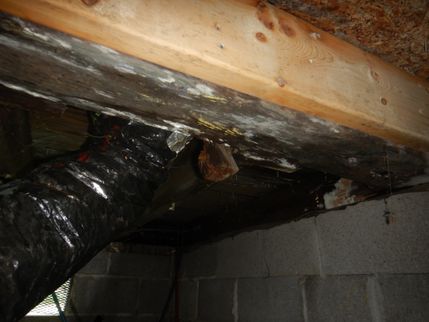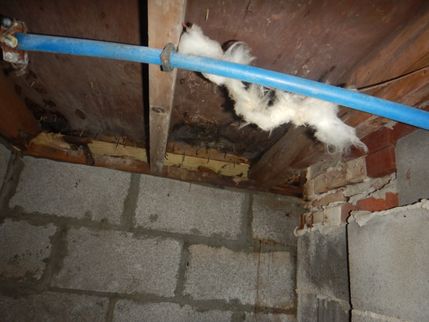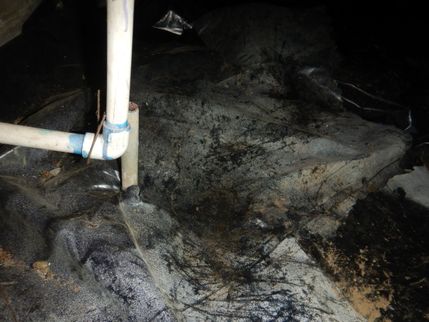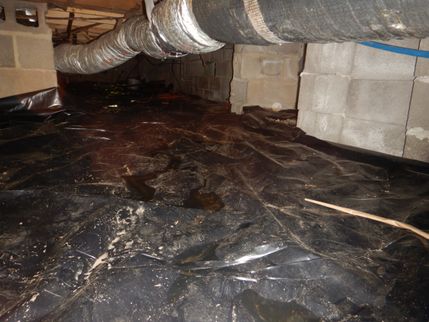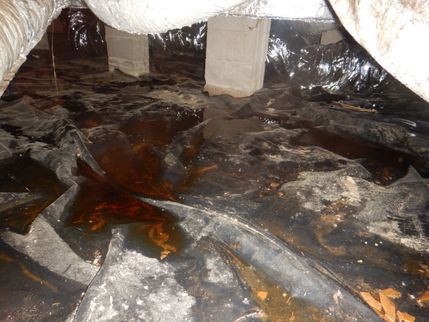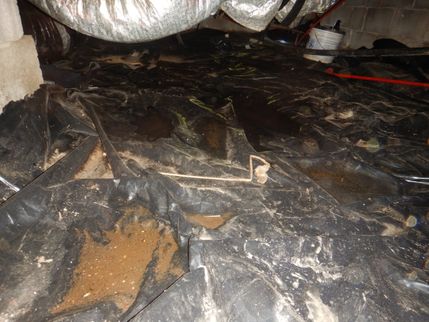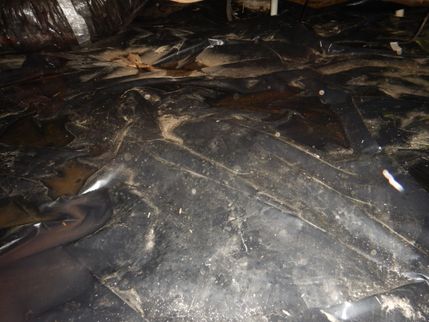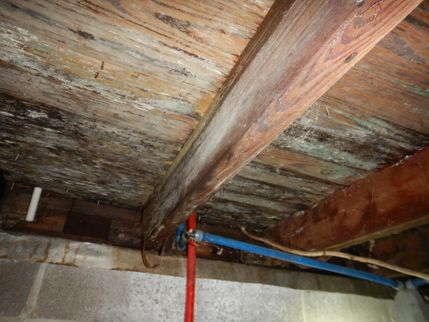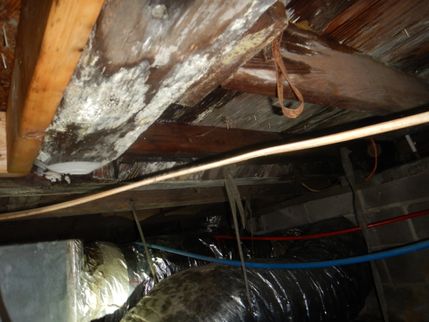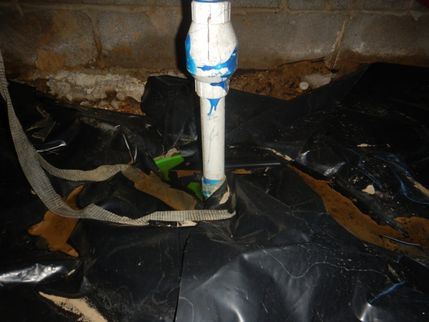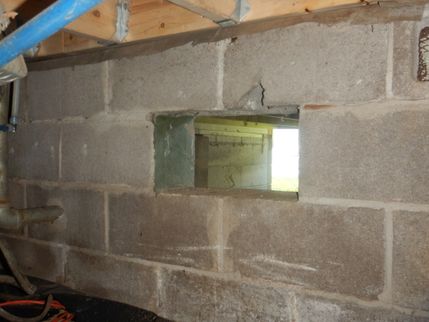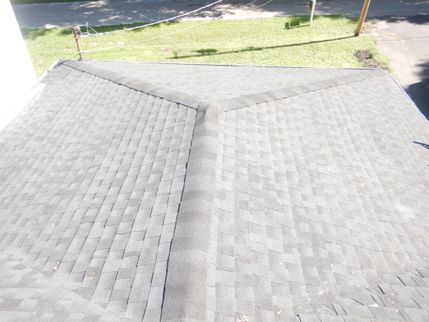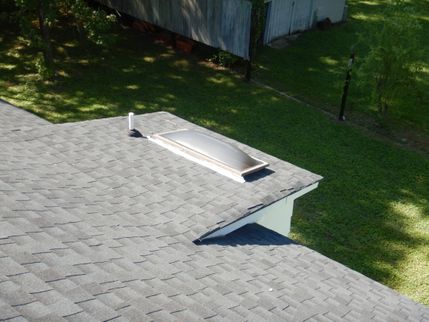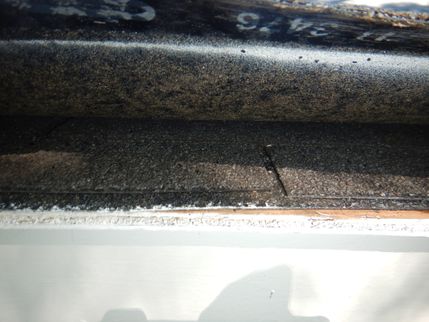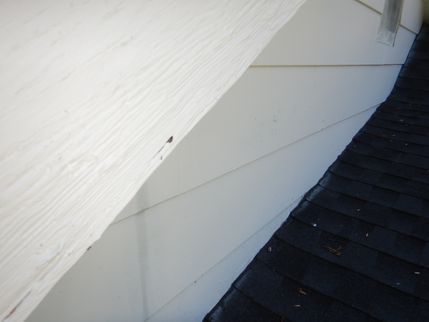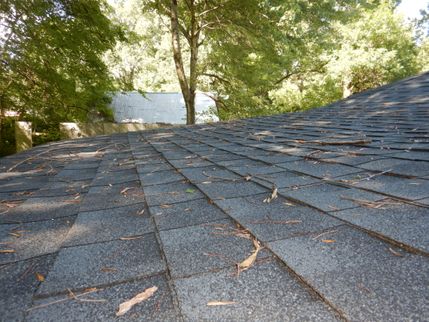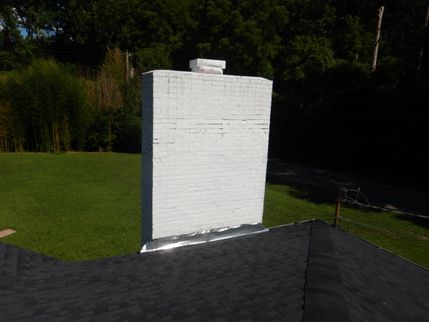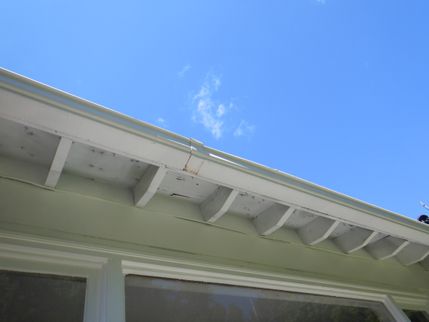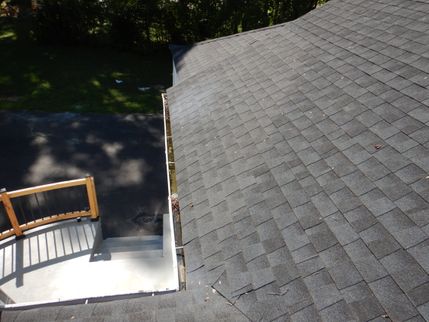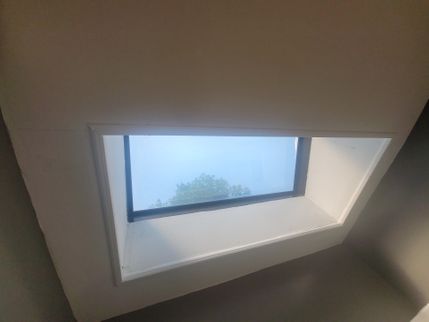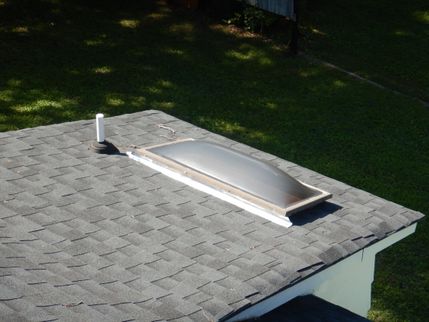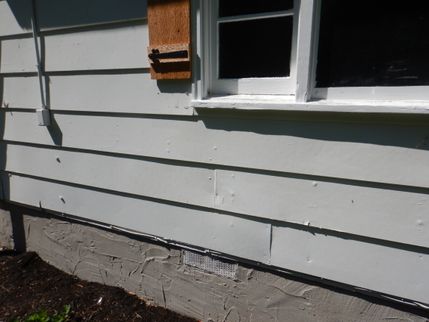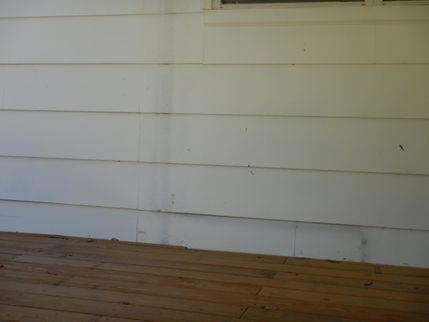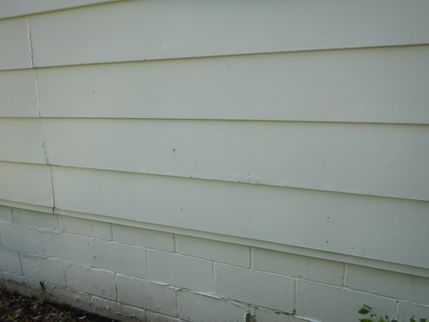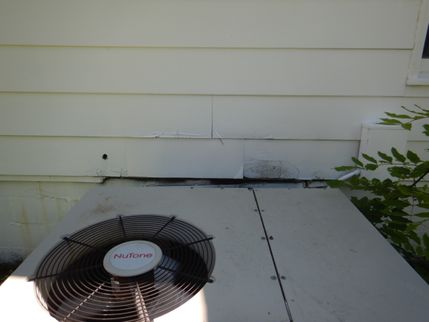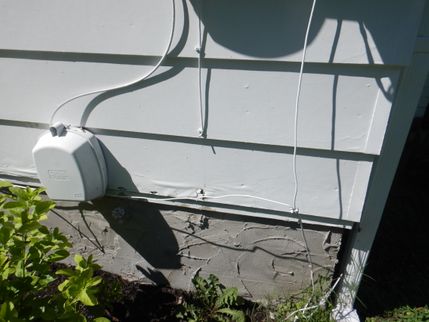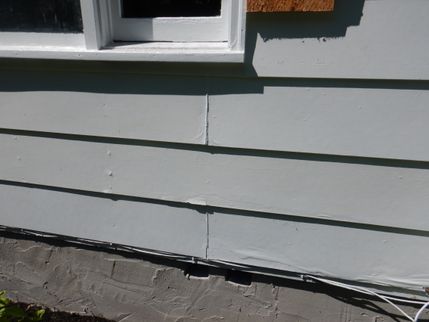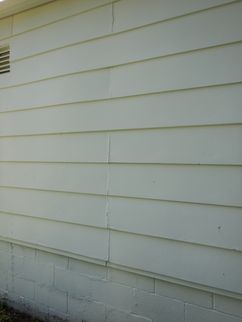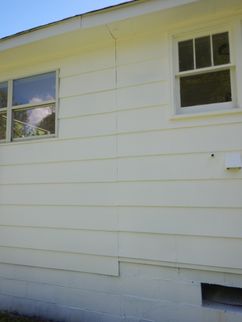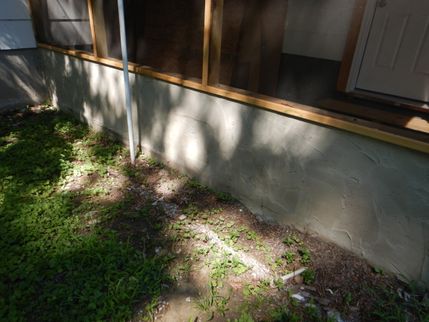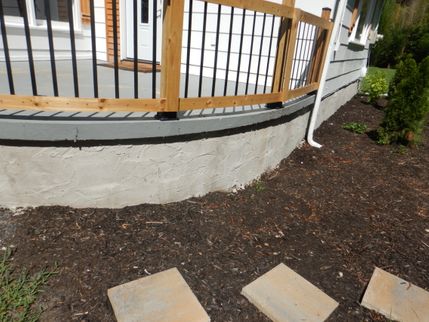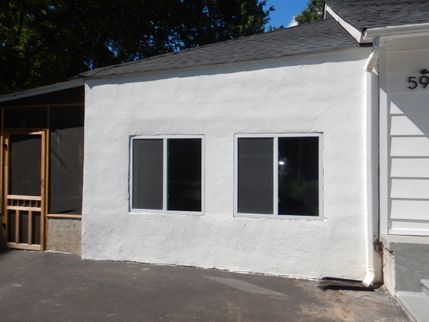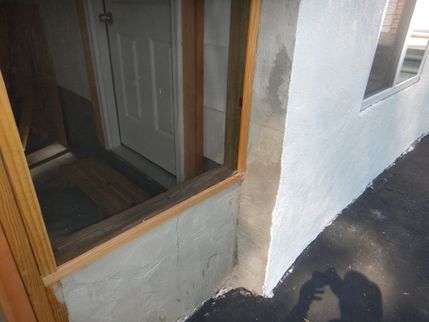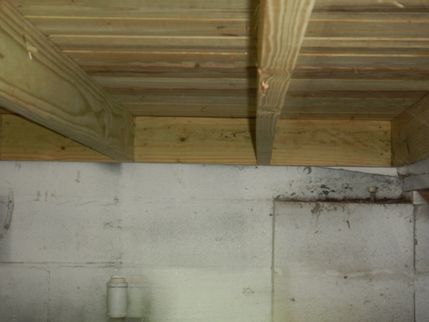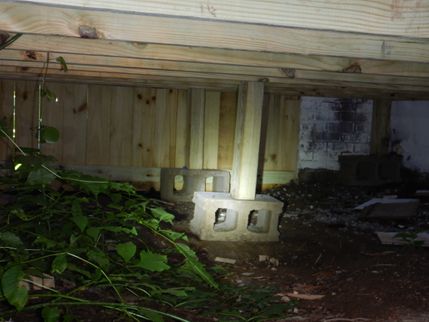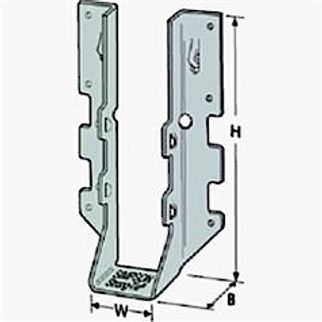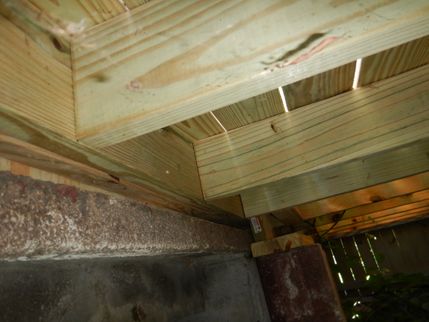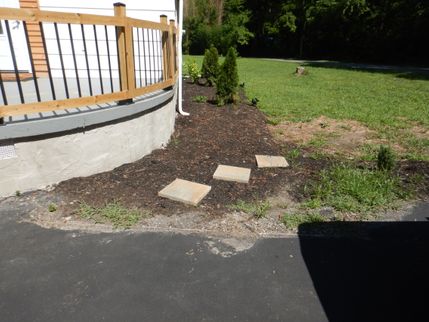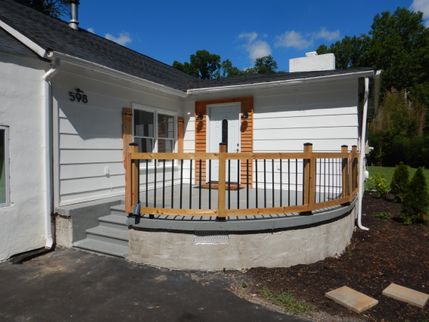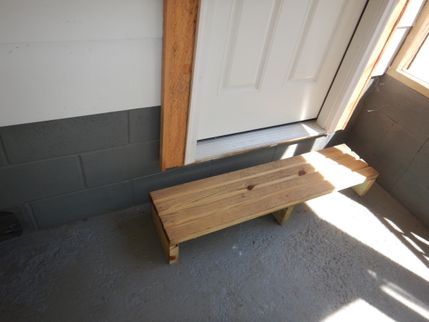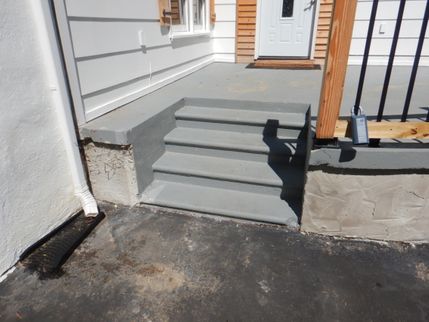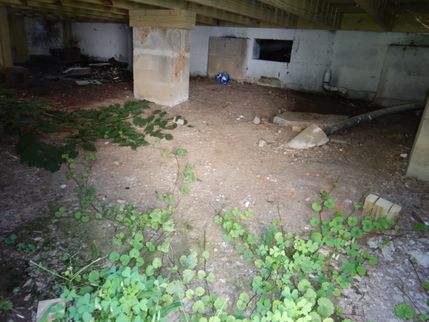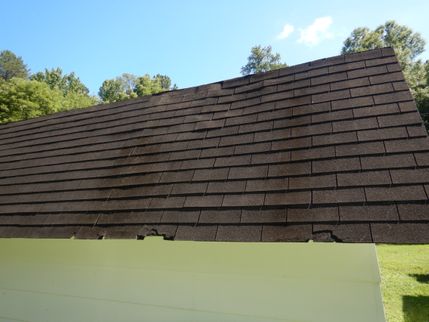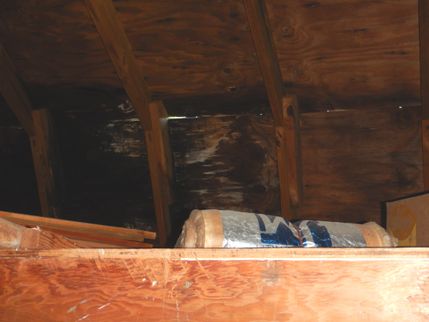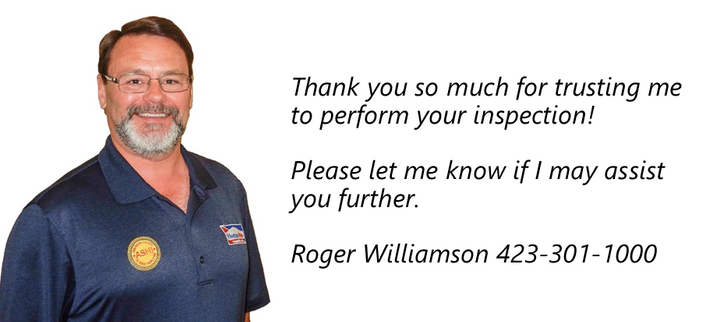How to Read This Report
This digital report or a printed version of this report should only be viewed in full color where the photos are discernible and on a device where the report page width is no less than 8.5" wide. Please note, Right and Left of the building are determined as facing the front of building shown on the report cover. The client has the duty and obligation to read the entire report. Feel free to reach out to the inspector should you have any questions or concerns.
This report is designed to inform the client of obvious major structural deficiencies, inoperative conditions and the presence of noticeable, detrimental moisture issues for areas inspected. Additionally, the inspection report may advise regarding notable safety concerns and appropriate upgrades recommended by the inspector that you should consider and act on when appropriate. Please note, undesirable conditions pertaining to this inspection may be present and unreported for concealed areas and areas with limited or blocked access.
Photos
Photos included in this report are intended to help describe a reported item or area only. The photos, while representative, may not encompass the full scope of work required to correct the item or area listed. Repairs should be based on actual condition of property and not solely on the photos included in this report. Note, when viewing photos in the online report, clicking on a photo will zoom in and enlarge the photo. Clicking on a photo a second time will enlarge and zoom in on the photo one more time.
Repairs
Repairs or corrections needed at the inspected property should be completed by competent qualified professions familiar with the type of work being performed. Obtain competitive bids as needed. Obtain further evaluation when needed.
Getting the Information to You
This report is designed to deliver important and technical information in a way that is easy to access and understand. The best way to get the layers of information that are presented in this report is to read your report online in the HTML format, which will allow you to expand your learning about the inspected property. You will notice some words or series of words highlighted in blue and underlined – clicking on these will provide you with a link to additional information, if desired. Other text colors, if present, have no real meaning. Please read all written text.
This report can also be printed on paper or to a PDF document.
Chapters and Sections
This report is divided into chapters that parcel the home into logical inspection components. Each chapter is broken into sections that relate to a specific system or component of the home. You can navigate between chapters with the click of a button on the left side margin when viewing the report online.
Observation Labels
Narrative observation labels are defined here. Some of the following observation labels may not appear in all reports. Hazardous, Key Concerns and Further Evaluation observation label types, if used, will appear in the report and in the summary. All other observation labels, when used, appear only in the report and will not appear in the summary. All narrative observation label types are labeled, and numbered to help differentiate each reported narrative observation. When narrative observation labels are given a color, the specific color used has no meaning. Some observation labels are given a specific icon to group the observation types. The specific icon used also has no meaning.
Observation labels and colors used for reporting are:
- Key Concerns:Observations listed as key concerns need repair or correction and will typically include inoperative equipment, common and significant corrections needed for plumbing, electrical, heating/cooling, structure, interior and exterior areas including the roof covering. When used, this observation will appear in the report and in the summary.
- Further Evaluation:Observations listed as further evaluation need a more extensive or technically exhaustive evaluation and warrant further investigation by a specialist. For areas where corrections may not be straight forward or where a proper plan should be developed to implement corrections, then further evaluation is recommended. To obtain further evaluation is to hire a specialist that is highly experienced in the repair or correction of a specific item or area. Some observations listed under other labels that also require further evaluation will appear under the other label only. When used, this observation will appear in the report and in the summary.
- Periodic Maintenance Needed:Observations listed as periodic maintenance needed are items or areas that need repair or correction and are expected to have maintenance performed at some interval. Maintenance neglect may be from lack of maintenance knowledge or lack of adequate funding for periodic maintenance. Some irregular or substandard installations may need more frequent maintenance until properly replaced. Start dates and intervals for periodic maintenance are a matter of personal judgment. When used, this observation will appear only in the report.
- Safety Concerns:Observations listed as safety concerns are items or areas listed to help reduce the risk of personal injury and should be considered for repair, correction or upgrade. Safety standards and expectations change. Consideration should be given to evaluate and act upon your risk exposure to help reduce the risk of personal injury. Some observations listed under other labels that are also safety concerns will appear under the other label only, such as electrical repairs, which almost always pose some safety risk. Some safety concerns may also be considered improvements but will fall under the safety concerns label if deemed more appropriate. When used, this observation will appear only in the report.
- Routine Correction Needed:Observations listed as routine correction need repair or correction and are not unusual for the type and age property inspected. These routine items are typically not recurring and once properly corrected should not require repetitive correction. When used, this observation will appear only in the report.
- Monitor:Observations listed as monitor are typically items or areas that need subsequent observations and should be monitored over time to obtain historical data. These items may or may not require correction in the future based upon their performance over time. If you are unable to do the monitoring, the inspector recommends you appropriately schedule monitoring by a qualified competent contractor. Some observations listed under other labels that also may require monitoring will appear under the other label only. When used, this observation will appear only in the report.
- Improve:Observations listed as improve are items or areas that were ready for repair or correction that involve improvement or upgrade. This label is used for predictable expected opportunities to better the property condition or installation deficiencies that may or may not affect equipment function. Some observations listed under other labels that also may be considered improvements will appear under the other label only. When used, this observation will appear only in the report.
- Note:Notes are general remarks or comments elaborating on descriptions of systems, limitations, restrictions, or other similar conditions present during the inspection. Notes do not appear in the summary.
- Inspector Informational Note:Inspector informational note regarding inspection process.
- Description:Descriptive information for various aspects of the property, equipment, items, or areas noted during the inspection. Descriptions do not appear in the summary.
- Deck Description:Description of observed deck conditions and issues.
Summary Page
For convenience, the report contains a summary. The inspector uses the Summary to list non Periodic Maintenance issues that, in his opinion, he would expect to be completed before marketing the home for sale. Be advised, the summary contains only text from the observations listed as Key Concerns, Further Evaluation Needed, Hazardous and when applicable, New Construction Builder Punch List Items. The summary does not show any photos or photo captions that may be listed with an observation. The summary provides the least information for the observations listed.
The report body contains the most information and includes full descriptions, digital photographs, captions, and when applicable, diagrams, videos and hot links to additional information. Refer to the report body when making actual corrections, upgrade or repairs. Please understand that you have a duty and obligation to read the full report.
Summary
Key Concerns
- K-1 KITCHEN:
Location Kitchen ──── ──── ──── ────
Area: Sink Faucet - Leak observed under sink.
Properly repair leak and any affected areas.
- K-2 KITCHEN:
Location Kitchen ──── ──── ──── ────
Area: Sink
An outdated S type waste trap was observed at plumbing waste drain. A modern properly installed P trap is recommended to prevent siphoning of water from trap and possible sewer gas entry into building.
- K-3 KITCHEN:
Dishwasher ────
Corrections were needed for the dishwasher. Dishwasher was viewed leaking beneath kitchen cabinet at plumbing waste piping connection. Properly put the dishwasher back in service correcting as needed for function and safety. Correct any affected areas as needed.
- K-4 KITCHEN:
Range ────
Electrical Breaker Appeared Off
The range was inspected and found inoperative when using the normal operating controls. The appliance appeared to be shut down and it was not viewed in operation. Properly put this cooking appliance back in service correcting as needed for function and safety.
- K-5 KITCHEN:
Microwave installation was questionable.
Refer to installation instructions properly correcting as needed for safety and function.
- L-1 LAUNDRY:
Proper laundry connections were not located for inspected property. Properly install laundry connections to meet your needs.
- Hose faucets were present at interior right of water heater near floor.
- There was no plumbing waste drain piping installed for a clothes washer.
- B-1 BATHROOM:
Location Full Bathroom Main Level at Hall ──── ────
Area: Sink
An outdated S type waste trap was observed at plumbing waste drain. A modern properly installed P trap is recommended to prevent siphoning of water from trap and possible sewer gas entry into building.
- B-2 BATHROOM:
Location Full Bathroom Main Level at Hall ──── ────
Area: Sink
Waste drain was sluggish. This may indicate a blockage in the drainage system or other problem may exist. Properly correct as needed.
- B-3 BATHROOM:
Location Full Bathroom Lower level Left ──── ────
Area: Sink
An outdated S type waste trap was observed at plumbing waste drain. A modern properly installed P trap is recommended to prevent siphoning of water from trap and possible sewer gas entry into building.
- P-1 PLUMBING:
Plumbing Supply Piping - PEX
PEX plumbing supply piping should be supported each 32-36". Some plumbing supply piping was observed poorly supported or hung. Properly support piping where needed with adequate hangers.
- P-2 PLUMBING:
PVC plumbing supply piping observed as plumbing system supply distribution piping.
PVC piping should not be used for plumbing supply distribution piping. PVC water supply piping is acceptable for the water service between the water meter and the building but should change to a suitable plumbing method after passing through foundation. Excess PVC piping was observed during inspection. A competent plumbing contractor should further evaluate plumbing installation properly correcting as needed.
- P-3 PLUMBING:
Plumbing Supply Piping
CPVC piping should be supported each 32-36". Some plumbing supply piping was observed poorly supported or hung. Properly support piping where needed with adequate hangers.
- P-4 PLUMBING:
Waste Piping
Improper use of a sanitary tee fitting was observed at crawl space.
Waste drain piping was irregular. Further evaluation and proper correction of irregular waste drain piping is recommended.
- P-6 PLUMBING:
Water Heater ──── ────
Water heater relief valve had a discharge extension pipe that was not rated for hot water and this pipe should be properly replaced. Refer to Relief Valve Instructions properly correcting as needed for function and safety.
- PVC piping is not rated for use with hot water and should not be used at water heater.
- P-7 PLUMBING:
Water Heater ──── ────
Water heater relief valve should have discharge extension pipe that is installed so that valve and discharge piping drain completely. Installed discharge pipe did not appear to be self draining. Properly correct water heater relief valve discharge pipe as needed for function and safety.
- P-8 PLUMBING:
Water Heater ──── ────
Water heater relief valve had a discharge extension pipe that was a smaller diameter pipe than the relief valve. For safety this pipe should not be reduced. Proper correction is needed for correct function and safety.
- P-9 PLUMBING:
Water Heater ──── ────
Questionable Installation
Water heater did not appear to meet manufacturer installation standards for proper installation when inspected. Refer to installation instructions and have a competent contractor correct as needed for function and safety.
- P-10 PLUMBING:
Water Heater ──── ──── Electrical Breaker Appeared Off
The electric water heater was inspected and found inoperative. The electrical breaker appeared to be off to the water heater when it was inspected and the unit was not observed in proper operation. Properly put the water heater back in service correcting as needed for function and safety. Verify Hot/Cold orientation is correct at plumbing outlets. Correct if needed.
- CS-1 CENTRAL SYSTEM:
Cooling System ──── ────
Proper servicing of system is recommended. Due to the condition of the cooling system, it is recommended that a qualified competent cooling contractor service this system properly repairing as needed for function and safety.
- Cooling system thermostat was found set at 65 degrees f.
- Room temperature at start of inspection was 73 degrees f.
- Condensing unit fan stopped running before thermostat was satisfied.
- CS-2 CENTRAL SYSTEM:
Heating System ──── ────
Proper servicing of system is recommended. Due to the condition of the heating system, it is recommended that a qualified competent heating contractor service this system properly repairing as needed for function and safety.
- Package system was a heat pump.
- Thermostat for system did not have a manual switch to test the backup heat / auxiliary heat / emergency heat. Proper correction is recommended.
- CD-1 Central Ductwork:
Ductwork ──── ────
Ductwork observed in contact with the ground. Central system ductwork should not touch the floor of the crawlspace. Ductwork may become damaged by moisture from ground contact. A competent heating contractor should check all ductwork and properly correct or replace ductwork as needed.
- CD-2 Central Ductwork:
Ductwork ──── ────
Properly replace or repair duct system as needed to adequately heat and cool all finished areas.
- E-1 ELECTRICAL:
Main Breaker Panel Dining Room ────
Multiple corrections were needed at electrical distribution panel. A competent electrical contractor should further evaluate this area. Make proper corrections as needed for safety and function now. Refer to the full report for additional information and photos regarding obvious corrections recommended for this electrical panel.
- E-2 ELECTRICAL:
Branch Wiring
Multiple corrections were needed to improve the safety of the electrical branch wiring. These corrections are usually non-recurring once properly completed. A competent electrical contractor should review the installed branch wiring making proper corrections where needed for both safety and function.
- Representative Photos Provided
- E-3 ELECTRICAL:
Electrical Receptacle Outlets ────
Multiple electrical receptacles were observed in need of correction.
An electrical contractor should check all receptacles making functional and safe where needed.
- Some receptacles were damaged with paint and should be replaced.
- One electrical receptacle at exterior front porch was inoperative when tested.
- Electrical receptacle at front center room tested hot/neutral reversed.
- Electrical receptacle at crawl space was improperly installed.
- Some receptacle covers required correction.
- Multiple three wire receptacles were observed on two wire circuits.
- E-4 ELECTRICAL:
Lighting/fans
Multiple lighting was inoperative or not fully functional when inspected. Make all lighting/fans functional and safe as needed.
Representative Photos Provided
- R1-1 ROOF:
Roofing covering was ready for corrections now.
A competent roofing contractor should check entire roof system and associated flashings. Properly repair or replace roof covering system as needed.
Roof Covering was Ready for Correction
- Representative Photos Provided
- Flashing appeared improperly installed. Correct where needed.
- Flashing appeared omitted at areas. Properly add flashing where needed.
- Some shingles observed improperly installed. Refer to installation instructions properly correcting where needed.
- R1-2 ROOF:
Roof slopes less than 2:12 require specific materials designed for low slopes. A competent qualified roofing contractor should properly install approved roofing for area noted.
- Low sloping roof area with a pitch less than 2:12 was observed improperly covered with roofing shingles at left roof area.
- R1-3 ROOF:
Coordinate roof covering corrections needed now in conjunction with roof framing corrections needed now.
- D-1 DECK:
Deck areas were observed ready for corrections now and before use to improve the structure of the deck and to improve the safety aspects for the fall prevention measures installed at deck areas. Refer to the full report for additional information and photos regarding obvious corrections recommended now for any deck areas. A competent deck contractor should check all deck areas. Make deck areas functional, safe and structurally sound where needed.
- Representative Photos Provided
Further Evaluations
- P-5 PLUMBING:
Sewer Gas Venting
Obtain further evaluation for plumbing venting system properly correcting as needed for function and safety.
- P-11 PLUMBING:
Plumbing system installation appeared irregular.
A Licensed Competent Plumbing Contractor should evaluate entire plumbing system. Properly repair or replace plumbing system as needed to make system fully functional and safe.
- S-1 STRUCTURE:
Roof Framing
Further evaluation of roof framing system was needed. Conditions observed at roof framing that warrant further evaluation by a specialist. A competent qualified contractor should further evaluate entire roof framing system and all supports determining corrective measures needed, take action to prevent recurrence and properly repair affected areas where needed.
- Irregular and outdated roof framing observed.
- S-2 STRUCTURE:
Roof Framing
Coordinate roof framing corrections needed now in conjunction with roof covering corrections needed now.
- S-3 STRUCTURE:
Conditions observed at floor system that warrant further evaluation by a specialist. A competent qualified contractor should further evaluate entire floor system and all supports determining corrective measures needed, take action to prevent recurrence and properly repair affected areas where needed. Making corrections for areas where needed now would help reduce predictable unnecessary settlement of structure.
- Representative Photos Provided
- Some floor framing was outdated or improper.
- Numerous irregular shoring measures were observed.
- Some floor framing was damaged and unrepaired.
- Some floor framing was damaged and improperly repaired.
- Some floor framing was damaged and partially repaired.
- Properly correct floor framing, foundation and supports to make area structurally sound.
- M-1 MOISTURE:
Standing water was present at crawl space
Crawl space area appeared to be suffering from a chronic excess moisture condition and proper corrections were needed when inspected for health safety and to protect building components.
The following describes logical steps for correction of affected areas. Your specific situation may vary. Correct or modify steps as needed.
- Further evaluation is needed to verify type of apparent fungus, if desired, to determine if apparent fungus is mold and type of mold, if present. Properly remediate including removal of floor insulation if present. This should be done in conjunction with controlling excess moisture.
- Further evaluation needed to determine all sources of moisture entry into crawl space area.
- Correct all controllable excess moisture entry into crawl space area such as plumbing leaks, condensate leaks, gutter down spouts, etc.
- Further evaluation needed to determine foundation and floor system repairs. Properly perform any structural repairs as needed.
- Clear and clean crawl space area of all unnecessary debris.
- Properly install dewatering system if needed.
- Properly encapsulate crawl space and properly condition crawl space air for all areas of crawl space or properly ventilate crawl space area, if possible.
- Ventilated crawl spaces should have crawl space floor insulation properly replaced, if removed.
- M-2 MOISTURE:
Questionable dewatering sump pump system was observed.
Obtain installation and warranty information for this equipment. The inspector recommends further evaluation by a competent contractor properly correcting if needed for function or safety. Such pumps should be accessible for periodic servicing and should have high water alarms to report failures. Inspection of this type system is outside the scope of the inspection performed and was not evaluated by the inspector.
- Sump pump system was inoperative when inspected as sump pump was unplugged.
- R1-4 ROOF:
Skylight condition or installation warrants further evaluation by a specialist. Obtain further evaluation for any installed skylight. Correct or replace skylight as needed. Correct any affected adjacent areas if present.
The Full Report
About the Inspection Process
Home Inspection: Scope and Purpose of a Home Inspection
The Scope and Purpose of a Home Inspection
Purchasing property involves risk
The purpose of a home inspection is to help reduce the risk associated with the purchase of a structure by providing a professional opinion about the overall condition of the structure. A home inspection is a limited visual inspection and it cannot eliminate this risk. Some homes present more risks than others. We cannot control this, but we try to help educate you about what we don’t know during the inspection process. This is more difficult to convey in a report and one of many reasons why we recommend that you attend the inspection.
A home inspection is not an insurance policy
This report does not substitute for or serve as a warranty or guarantee of any kind. Home warranties can be purchased separately from insuring firms that provide this service.
A home inspection is visual and not destructive.
The descriptions and observations in this report are based on a visual inspection of the structure. We inspect the aspects of the structure that can be viewed without dismantling, damaging or disfiguring the structure and without moving furniture and interior furnishings. Areas that are concealed, hidden or inaccessible to view are not covered by this inspection. Some systems cannot be tested during this inspection as testing risks damaging the building. For example, overflow drains on bathtubs are generally not tested because if they were found to be leaking they could damage the finishes below. Our procedures involve non-invasive investigation and non-destructive testing which will limit the scope of the inspection.
This is not an inspection for code compliance
This inspection and report are not intended for city / local code compliance. During the construction process structures are inspected for code compliance by municipal inspectors. Framing is open at this time and conditions can be fully viewed. Framing is not open during inspections of finished homes, and this limits the inspection. All houses fall out of code compliance shortly after they are built, as the codes continually change. National codes are augmented at least every three years for all of the varying disciplines. Municipalities can choose to adopt and phase in sections of the codes on their own timetables. There are generally no requirements to bring older homes into compliance unless substantial renovation is being done.
This is just our opinion
Construction techniques and standards vary. There is no one way to build a house or install a system in a house. The observations in this report are the opinions of the home inspector. Other inspectors and contractors are likely to have some differing opinions. You are welcome to seek opinions from other professionals.
The scope of this inspection
This inspection will include the following systems: exterior, roof, structure, drainage, foundation, attic, interior, plumbing, electrical and heating. The evaluation will be based on limited observations that are primarily visual and non-invasive. This inspection and report are not intended to be technically exhaustive.
Your expectations
The overall goal of a home inspection is to help ensure that your expectations are appropriate with the house you are proposing to buy. To this end we assist with discovery by showing and documenting observations during the home inspection. This should not be mistaken for a technically exhaustive inspection designed to uncover every defect with a building. Such inspections are available but they are generally cost-prohibitive to most home buyers.
Home Inspection Agreement
Inspection Agreement
Major Structural and Electromechanical Inspection
HomePro Inspection, Inc. agrees to conduct an inspection for the purpose of informing the CLIENT of major deficiencies in the condition of the property in accordance with the Standards as set forth by the American Society of Home Inspectors (ASHI) and the State of Tennessee. The inspection and written report are performed and prepared for the sole, confidential and exclusive use and possession of the CLIENT; the report is nontransferable.
The written report will include the following only:
- general exterior, including roof, siding, windows, chimney, drainage and grading
- structural condition of foundation & frame
- electrical, plumbing, hot water heater, heating and air conditioning
- general interior, including ceilings, walls, floors, windows, insulation and ventilation
Maintenance and other items may be discussed but they are not a part of the inspection. The report is not a compliance inspection or certification for past or present governmental codes or regulations of any kind and is only based on the inspector’s opinions.
It is understood and agreed that the inspection will be of readily accessible areas of the building and is limited to visual observations of apparent conditions existing at the time of the inspection only. Latent and concealed defects and deficiencies are excluded from the inspection; equipment, items and systems will not be moved or dismantled. When the inspection is for only one or a limited number of systems or components, the inspection is limited to only those systems or components that were inspected. Detached structures are not included. HomePro Inspection, Inc. will be under no obligation under any circumstances for any further follow-up inspection.
ENVIRONMENTAL HAZARDS including Asbestos, Mold, Fungus, Lead, Radon, Cockroaches, Rodents, Pesticides, Treated Lumber, Mercury, Carbon Monoxide, Urea Formaldehyde, Toxic Wastes, Polluted Water, Contaminants and all Pollutants and Hazardous Materials or other similar environmental hazards are not part of this Home Inspection. In addition, no inspection for household insects or unwanted animals will be done.
This report does not address Subterranean Systems or system components for Sewage Disposal, Water Supply, or Fuel Storage or Delivery. Auxiliary systems such as Alarm, Security, Intercom, other low voltage wiring, Generator, Private Water, Sprinkler, Elevator, Central Vacuum, Refrigerators, Laundry Equipment, Solar, Swimming Pools, Hot Tubs, Saunas, Space Heaters, Window Air Conditioners and or any system not considered a part of the major building systems are not a part of the inspection process.
The parties agree that the HomePro Inspection, Inc., and its employees and agents, assume no liability or responsibility for the cost of repairing or replacing any unreported defects or deficiencies, either current or arising in the future, or for any property damage, consequential damage or bodily injury of any nature. THE INSPECTION AND REPORT ARE NOT INTENDED AS A GUARANTEE OR WARRANTY, EXPRESSED OR IMPLIED INCLUDING REGARDING THE ADEQUACY, OR PERFORMANCE OF ANY INSPECTED STRUCTURE, ITEM OR SYSTEM. THE HOMEPRO INSPECTION, INC. IS NOT AN INSURER OF ANY INSPECTED CONDITIONS.
It is understood and agreed that should HomePro Inspection, Inc. and/or its agents or employees be found liable for any loss or damages resulting from a failure to perform any of its obligations, including but not limited to negligence, breach of contract or otherwise, then the liability of HomePro Inspection, Inc. and/or its agents or employees, shall be limited to a sum equal to the amount of the fee paid by the CLIENT for the Inspection and Report.
The parties agree that the faxed or digital copy of the agreement is to be relied upon in lieu of the original.
Acceptance and understanding of this agreement are hereby acknowledged:
General Comments
Building Characteristics, Conditions and Limitations
Type of Building : Single Family Home
Site Built, Apparent additions built after original construction were observed.
Approximate Square Footage: 1793
Approximate Year of Original Construction: 1958
Weather during the inspection: Cloudy
Approximate Low Temperature During Inspection: 80[F]
Approximate High Temperature During Inspection: Above 80[F]
Ground/Soil surface conditions: Dry
INTERIOR
Access
Empty of Furnishings
Home was empty of furnishings when inspected.
Walls
Ceilings
Flooring
Floor Covering Materials: Engineered Flooring
Not Level Older, Recondition Your Standard
Flooring ──── ──── ──── ────
Some flooring appeared out of level. This is not uncommon for older structures. Monitor area correcting to meet your standards.
Properly recondition area to your standard.
Doors at Interior
Doors to Exterior
Door Condition: Hinge Screws, Operation
────
Screws were missing at hinges that are designed to connect the door frame to the structure. Refer to installation instructions properly completing door installation where needed.
- Hinge Screws to Structure Were Missing at multiple entry doors
────
Door operation could be improved. Properly correct door operation to meet your needs.
Check All
Check all doors to exterior properly making doors functional, secure and weather tight to meet your needs.
Glazing/Glass
Insulated glass was present.
Single pane glass was present.
Windows
Metal framed windows were present.
Vinyl framed windows were present.
Wood framed windows were present.
Escape and Rescue, Screens
Consider upgrade for escape and rescue window openings. Window for one or more possible sleeping areas did not appear to meet modern safety standards for an emergency escape or a rescue opening from a sleeping room. Evaluate your risk exposure correcting or making contingency measures as needed. Consider this area for appropriate upgrade or improvement.
Window screens are not required on homes with central cooling system air conditioning. Install window screens where missing, if desired.
Window List, Consider Replacement
- A representative number of windows were inspected. Windows were ready for corrections. Window conditions observed appear below in a bulleted list below. Check all windows correcting as needed for function and safety.
- Most windows were stuck closed.
- Some window locks were missing.
Consider replacement windows as a more cost effective long term solution than repairing existing windows now and performing future periodic maintenance.
Stairs/Railings Interior
Diagram: Older Railing & Stairs
Railings and Stairs, as expected, appeared older and did not meet current safety standards. Railings and stairs were ready for modernization for improved safety. Evaluate your risk exposure. Consider proper repair or replacement of stairs and railings where needed now for safety and function.
KITCHEN
Inspection Process
Kitchen Inspection Process
Kitchen Inspection Process
Kitchen inspection was of the readily accessible and visible portions of the kitchen. The kitchen inspection includes the countertops and a representative number of cabinets. Kitchen faucets, when functional, are run for longer than one minute checking for observable leaks and hot/cold orientation.
The following builtin kitchen appliances, where installed, were inspected and on/off operated testing the main function of each appliance using the normal operating controls:
- Cooktop / Oven / Range (cook surface with integral oven)
- Microwave
- Garbage Disposal
- Trash Compactor
Installed dishwashers are run through a normal cycle. Obvious functional issues and leaks observed around the dishwasher are reported, if present.
Ventilation equipment, such as range hoods, are inspected, on/off operated and are reported as ductless, ducted or recirculating. It is beyond the scope of this inspection to determine the effectiveness of the kitchen exhaust fan, such as to verify air flow quantity or discharge location.
Appliance inspection does not cover clocks, timers, self cleaning function, calibration, automatic functions or optional equipment on appliances. Refrigerators are considered personal property and are not evaluated. Refrigerator presence or absence is noted.
Equipment that appears to be shut down, inoperable or intentionally taken out of service is noted but will not be operated by the inspector. Shut down equipment may be unplugged, breaker off, water off, gas off or otherwise taken out of service.
Installation conditions and functional issues for this area requiring correction should be performed by a competent qualified contractor.
Kitchen
Kitchen Area: Main Level
Kitchen ────
Countertop: Wood
Serviceable fulfilling its function
Cabinets: Wood painted
Wear and damage observed budget recondition
Multiple cabinet doors were missing.
Floor Covering: Peel and Stick Vinyl Tile
Incomplete - Additional work was needed
────
Sink: Single Bowl Stainless Steel
────
────
Disposal: Not Present
Dishwasher: Present
Range: Range (Electric Top/Oven)
Present
Microwave: Present and On/Off Tested functional
Kitchen Exhaust: Ductless in microwave appeared functional
Refrigerator: Present but not evaluated. Refrigerator was stored at dining room.
Trash Compactor: Not Present
Location Kitchen ──── ──── ──── ────
Area: Sink Faucet - Leak observed under sink.
Properly repair leak and any affected areas.
Location Kitchen ──── ──── ──── ────
Area: Sink
An outdated S type waste trap was observed at plumbing waste drain. A modern properly installed P trap is recommended to prevent siphoning of water from trap and possible sewer gas entry into building.
Dishwasher ────
Corrections were needed for the dishwasher. Dishwasher was viewed leaking beneath kitchen cabinet at plumbing waste piping connection. Properly put the dishwasher back in service correcting as needed for function and safety. Correct any affected areas as needed.
Range ────
Electrical Breaker Appeared Off
The range was inspected and found inoperative when using the normal operating controls. The appliance appeared to be shut down and it was not viewed in operation. Properly put this cooking appliance back in service correcting as needed for function and safety.
LAUNDRY
Laundry Connections
Laundry: Connections Not Observed
Proper laundry connections were not located for inspected property. Properly install laundry connections to meet your needs.
- Hose faucets were present at interior right of water heater near floor.
- There was no plumbing waste drain piping installed for a clothes washer.
BATHROOM
Inspection Process
Testing Limitations
Bathroom Inspection Process
The following opinion was based on an inspection of the readily accessible and visible portions of bathroom areas.
Hand washing faucets, when functional, are run for longer than one minute checking for observable leaks at the faucet and beneath the sink as well as checking Hot/Cold orientation.
Bathing area faucets, when functional, are run for longer than five minutes checking for observable leaks and Hot/Cold orientation.
Toilets, when functional, are flushed no less than two times. Inspector checks for leaks around toilet, checks that toilet fills and shuts off, and checks to see if toilet appears securely mounted.
Effectiveness and discharge locations for mechanical bathroom exhaust vents are not confirmed during inspection.
Installation conditions and functional issues for this area requiring correction should be performed by a competent, qualified contractor.
Bathroom 1
Full Bathroom
Location Full Bathroom Main Level at Hall ──── ────
Bathing Area: Shower
────
────
────
Hand Washing: Vanity with basin ────
────
────
────
Toilet: Water tank type ────
No Leaks were observed around toilet and it appeared secured in place.
Ventilation: ────
Fan on/off tested operative. Consider exhausting to exterior if needed.
Floor Covering: Engineered Flooring
Flooring was not level. Consider for correction.
────
Bathing Area: Shower Head (Leak at Shower Head), Waste (Temporary Drain Repair)
Location Full Bathroom Main Level at Hall ──── ────
Area: Shower Area
Leak observed at shower head piping. Properly correct as needed.
Sink/Faucet: Waste (Waste Drain Sluggish)
Location Full Bathroom Main Level at Hall ──── ────
Area: Sink
An outdated S type waste trap was observed at plumbing waste drain. A modern properly installed P trap is recommended to prevent siphoning of water from trap and possible sewer gas entry into building.
Bathroom 2
Full Bathroom
Location Full Bathroom Lower level Left ──── ────
Bathing Area: Combination tub and shower
No leaks were observed around faucet and the water containment area appeared serviceable.
────
────
Hand Washing: Pedestal type ────
────
────
────
Toilet: Water tank type ────
No Leaks were observed around toilet and it appeared secured in place.
Ventilation: ────
None. Bath ventilation recommended. Consider adding.
Floor Covering: Engineered Flooring
Some wear noted. Recondition as desired.
────
PLUMBING
Supply Piping
Supply Piping: PEX
PVC piping viewed at foundation likely from water meter
Water Flow at Supply Piping: Minimal
Minimum acceptable flow was observed. The inspector was able to run two faucets at the same time but the water flow dropped as other water outlets were opened. Verify all water valves are properly opened. Monitor water flow. If additional flow is desired consult a plumbing contractor to investigate your options.
Not Supported Properly: PEX, CPVC
PVC: As Distribution
Plumbing Supply Piping - PEX
PEX plumbing supply piping should be supported each 32-36". Some plumbing supply piping was observed poorly supported or hung. Properly support piping where needed with adequate hangers.
PVC plumbing supply piping observed as plumbing system supply distribution piping.
PVC piping should not be used for plumbing supply distribution piping. PVC water supply piping is acceptable for the water service between the water meter and the building but should change to a suitable plumbing method after passing through foundation. Excess PVC piping was observed during inspection. A competent plumbing contractor should further evaluate plumbing installation properly correcting as needed.
Waste Piping
Waste Piping: Plastic
Apparent Vent Piping
Plastic
Further Evaluate Venting
Sewer Gas Venting
Obtain further evaluation for plumbing venting system properly correcting as needed for function and safety.
Exterior Hose Faucets
Consider Adding at Cooling Unit
Exterior Hose Faucet
Consider adding exterior hose faucet near cooling system condensing unit to facilitate cleaning condensing coils.
Performance: Leaked at Handle, Dripping
Exterior Hose Faucet at Front
Water viewed leaking from hose faucet handle when faucet was on. Repair faucet for proper operation.
Exterior Hose Faucet at Front
Hose faucet was observed dripping when inspected and should be properly repaired.
Water Heater
Water Heater
Discharge Piping: PVC Not For Hot Water, Should Self Drain, Undersized
Installation Issue: Leak Pan Drained to Interior
Water Heater ──── ────
Leak pan was observed beneath water heater that drained to an interior area defeating the function of the leak pan. The leak pan should drain to an exterior area. Proper correction is recommended to prevent damage to interior areas should the water heater leak pan receive water such as from a water heater leak.
Water Heater ──── ────
Water heater relief valve had a discharge extension pipe that was not rated for hot water and this pipe should be properly replaced. Refer to Relief Valve Instructions properly correcting as needed for function and safety.
- PVC piping is not rated for use with hot water and should not be used at water heater.
Water Heater ──── ────
Water heater relief valve should have discharge extension pipe that is installed so that valve and discharge piping drain completely. Installed discharge pipe did not appear to be self draining. Properly correct water heater relief valve discharge pipe as needed for function and safety.
Water Heater ──── ────
Water heater relief valve had a discharge extension pipe that was a smaller diameter pipe than the relief valve. For safety this pipe should not be reduced. Proper correction is needed for correct function and safety.
Water Heater ──── ────
Questionable Installation
Water heater did not appear to meet manufacturer installation standards for proper installation when inspected. Refer to installation instructions and have a competent contractor correct as needed for function and safety.
Water Heater ──── ──── Electrical Breaker Appeared Off
The electric water heater was inspected and found inoperative. The electrical breaker appeared to be off to the water heater when it was inspected and the unit was not observed in proper operation. Properly put the water heater back in service correcting as needed for function and safety. Verify Hot/Cold orientation is correct at plumbing outlets. Correct if needed.
Equipment Observed
Plumbing Equipment Observed Present But Not Tested or Evaluated: ________________________________________________________________________________________________________________________________________________________________
Thermal Expansion: About Thermal Expansion
Regarding Plumbing System Thermal Expansion:
Thermal expansion occurs when a tanked water heater operates without any plumbing valves open for a period of time. If the property water meter has a check or backflow preventer valve installed it will prevent the expanding contained water from flowing backwards through the water meter. This expansion causes the water heater pressure relief valve to open briefly releasing a small amount of water if an expansion control device is not present or not working properly. If the pressure relief valve on the water heater opens and does not seal closed properly then active leaks and subsequent damage may occur.
Tank Present
A plumbing thermal expansion tank was observed near the water heater. Maintain this area as you would any other portion of the plumbing system correcting when needed.
________________________________________________________________________________________________________________________________________________________________
Pressure Reducer: About Pressure Reducing Valves
Regarding Plumbing System Pressure Reducing Valves:
The pressure reducer or pressure regulator in a plumbing system is designed to reduce the water pressure to a reasonable level in an effort to help prevent damage to the plumbing system. For most areas if the utility water pressure is greater than 80 PSI (pounds per square inch) a pressure reducer is needed. For some areas with extremely high utility pressure multiple pressure reducers may be needed installed in series. Pressure reducers are typically factory set for 50 PSI and property water pressure is expected to be between 30 PSI and 80 PSI. Inspector notes presence of pressure reducer when observed. Pressure readings for plumbing system are not part of the inspection performed.
Pressure Reducer Location: Crawl Space, Photo
________________________________________________________________________________________________________________________________________________________________
Property Owner - Plumbing Supply Piping - MAIN WATER SHUT OFF VALVE - Apparent Location - Note Such Valves are Not Operated : Unknown
Consider Adding Isolation Valve
Plumbing Other
Plumbing system installation appeared irregular.
A Licensed Competent Plumbing Contractor should evaluate entire plumbing system. Properly repair or replace plumbing system as needed to make system fully functional and safe.
CENTRAL SYSTEM
Central Heat/Cool
Package System - Heat Pump
Central Heating/Cooling
Package Heat Pump System Served: System served majority of home ────
Brand Heat Pump: Nutone by Nortek / Location: Exterior Package Unit / Fuel: Electric Heat Pump
Heat Pump Size: 2.5 ton / Year of Manufacture: 2013
Heat pumps typically have a service life of 12-18 years when properly maintained
Filter Type: Disposable / Thermostat Type: Digital
Condensate disposal method: Gravity drain for condensate
────
________________________________________________________________________________________________________________________________________________________________
Cooling System ──── ────
Proper servicing of system is recommended. Due to the condition of the cooling system, it is recommended that a qualified competent cooling contractor service this system properly repairing as needed for function and safety.
- Cooling system thermostat was found set at 65 degrees f.
- Room temperature at start of inspection was 73 degrees f.
- Condensing unit fan stopped running before thermostat was satisfied.
Heating System ──── ────
Proper servicing of system is recommended. Due to the condition of the heating system, it is recommended that a qualified competent heating contractor service this system properly repairing as needed for function and safety.
- Package system was a heat pump.
- Thermostat for system did not have a manual switch to test the backup heat / auxiliary heat / emergency heat. Proper correction is recommended.
Central Ductwork
Distribution Ductwork
Ductwork Information: About your central heating and cooling ductwork
Regarding calculating the load of a central system:
Several factors are considered when performing a load evaluation for central heating and cooling systems to determine the appropriate size system for the area served. Factors such as installed ductwork, insulation, ceiling height, basement area served, if present, shade, climate zone along with size, number and placement of windows have to be taken into account before sizing a system. The inspector does not calculate the load of a central heating and cooling system during the performed inspection. The inspector also does not confirm that the installed ductwork is appropriately sized to serve the the installed central heating and cooling equipment. Properly maintain the ductwork system to meet your comfort needs and to allow system to operate properly.
Ductwork: Ductwork Not at All Rooms
Ductwork ──── ────
Some rooms did not appear to be served by central system ductwork. Monitor your comfort level correcting if desired.
Ductwork did not appear installed to serve:
- Right rear room
- Left rear bathroom.
Ductwork Issue: Rain Guard Package Unit Repair, Cleaning Needed, Install Duct Outlet Registers
Rain guard for exterior ductwork of package heating/cooling unit was damaged or in need of repair. Properly correct rain guard and any ductwork damage as needed.
Ductwork appeared ready for cleaning. Properly maintain duct system to meet your needs.
Install proper central system duct outlet registers where missing or needed.
Ductwork ──── ────
Ductwork observed in contact with the ground. Central system ductwork should not touch the floor of the crawlspace. Ductwork may become damaged by moisture from ground contact. A competent heating contractor should check all ductwork and properly correct or replace ductwork as needed.
Ductwork ──── ────
Properly replace or repair duct system as needed to adequately heat and cool all finished areas.
Space Cooling
Space Heating
Fireplace
Fireplace Use Nonessential
Regarding Fireplace Use:
Fireplace use was nonessential. The installed fireplace was not the sole heating system for the inspected property and does not have to function if you do not desire to use the fireplace area. Typically, deficient fireplaces are not listed in the summary of the report. Properly repair fireplace area for function and safety if use is desired.
Type: Masonry Fireplace
________________________________________________________________________________________________________________________________________________________________
Abandoned: Flue Covered at Exterior, Repair if Not Removing Abandoned Chimney
Abandoned Do Not Use Fireplace or Chimney Without Proper Correction: ────
Chimney flue appeared covered or obstructed at exterior. Do Not Use chimney for wood burning or gas appliance. Consult chimney specialist if use desired.
Abandoned Chimney
Abandoned Chimney Without a Fireplace
Abandoned Chimney Do Not Use Without Proper Correction: ────
Chimney appeared to be abandoned. Consider properly removing abandoned chimney below roof to reduce periodic maintenance at this unnecessary roof penetration. If not removing abandoned chimney now, properly maintain structure as needed for integrity and to prevent unwanted moisture intrusion.
ELECTRICAL
Electrical Inspection
Electrical System Inspection
What is an electrical system?
The electrical system consists of an electrical service, distribution equipment and branch wiring. The electric metering equipment is usually at the electrical service. Distribution equipment is most often one or more installed breaker panels and the branch wiring runs to all equipment, receptacles, lighting outlets and devices such as the light switches. The inspection report focuses on wiring operating between 100-250 Volts. Most low voltage wiring is excluded from the performed inspection. Low voltage items such as a heating and cooling thermostat are operated in order to determine the function of such equipment.
There are now a wide variety of lighting bulbs or lamps that will fit into lighting fixtures. Some choices may not be appropriate for some lighting fixtures. It is beyond the scope of this inspection to verify each lamp or bulb is appropriate for the installed lighting fixture. The inspector recommends that you review the bulb or lamp installations for each fixture correcting as needed for safety and function. Common errors include 100 watt bulbs installed in fixtures rated for 60 watt max bulbs and interior rated bulbs installed at exterior or damp locations. Other types of errors also exist.
The following opinion was based on an inspection of the readily accessible and visible portions of the electrical system. The Inspector is responsible for checking a representative number of installed lighting fixtures, switches, and receptacles. Electrical installation conditions and functional issues requiring correction should be performed by a competent licensed electrical contractor. Most, if not all, electrical corrections should be considered a safety concern.
ELECTRICAL SERVICE
System Amps / Volts
System Amperage: 200 Amps
System Voltage: 120/240 Volts
MAIN PANEL
Location
Service Entrance Conductors: Aluminum, Stranded
Index: Index
Electrical panel directory was ready for correction. Properly index or label each electrical panel circuit as needed for clarity and safety.
Location Issue: Main Disconnect Not Near Service
The main electrical disconnect was not located near the electrical service. This modern requirement is to assist firefighters and other personnel to more quickly disconnect the electrical power to the building when needed. Evaluate your risk exposure considering an upgrade for this issue.
Enclosure: Protect Wiring at KO
Wiring: Remark Wiring
Wiring: Sheathing Excess
Remove excess sheathing at wiring inside electrical panel where needed.
Breaker: Breakers Off Multiple
Multiple breakers observed switched off, correct as needed.
Main Breaker Panel Dining Room ────
Multiple corrections were needed at electrical distribution panel. A competent electrical contractor should further evaluate this area. Make proper corrections as needed for safety and function now. Refer to the full report for additional information and photos regarding obvious corrections recommended for this electrical panel.
Branch Wiring
Material: Copper
Wiring Method: Non Metallic Sheathed Cable
Service Disconnect Missing
Electrical service disconnect was not observed near water heater at Equipment Room. An electrical service disconnect within view of the permanently installed appliance is an important safety device for personnel servicing equipment. A competent electrical contractor should properly install an electrical service disconnect where missing for safety.
Older Wiring
Portions of the installed branch wiring appeared older and may have been installed at or near original construction date. Properly maintain or upgrade the installed branch wiring as needed for function and safety.
Branch Wiring
Multiple corrections were needed to improve the safety of the electrical branch wiring. These corrections are usually non-recurring once properly completed. A competent electrical contractor should review the installed branch wiring making proper corrections where needed for both safety and function.
- Representative Photos Provided
AFCI
AFCI Residential
What is Arc Fault Circuit Interrupter (AFCI) Protection?
AFCI protection is designed to help reduce the chance of fire when a specific type of malfunction occurs at installed electrical outlets. This protection detects unintended electrical arcs and disconnects the power before the arc starts a fire.
Most, but not all, homes will have a need for additional AFCI protection based on varied municipal enforcement and the numerous changes for which areas require AFCI protection. Evaluate your risk exposure. Consider adding AFCI protection where needed for improved safety, particularly where construction was completed 2002 or later.
Modern Locations Where AFCI Protection is Known to Improve Safety for 15 and 20 Amp Electrical Circuits:
For all 15 and 20 ampere single phase residential electrical circuits serving outlets and devices in Kitchens, Family Rooms, Dining Rooms, Living Rooms, Parlors, Libraries, Dens, Bedrooms, Sunrooms, Recreation Rooms, Closets, Hallways, Laundry Areas, or similar rooms or areas.
Testing AFCI Function
The inspector uses push button at AFCI breakers, where installed, to confirm AFCI protection trips. Once tripped, the inspector checks indexed electrical circuits to determine where AFCI protection is present or missing.
Obvious locations lacking AFCI protection are listed in the body of the report.
Obvious broken, non working and improperly wired AFCI receptacles or breakers are listed in the summary of the report. Evaluate your risk exposure.
No AFCI Built Before 2002
Areas That Did Not Appear AFCI Protected
No AFCI protection was observed at inspected property. AFCI protection is not expected for homes built before 2002. If installation of AFCI protection is desired, consult a competent electrical contractor.
GFCI
GFCI Residential
What is Ground Fault Circuit Interrupter (GFCI) Protection?
GFCI protection is designed to help reduce the risk of being shocked when using electricity in certain areas.
Most, but not all, buildings will have a need for additional GFCI protection based on varied municipal enforcement and the numerous changes for which areas require this type of protection. Evaluate your risk exposure. Consider adding GFCI protection for 15 and 20 ampere electrical circuits where needed for improved safety.
Modern Locations Where GFCI Protection is Known to Improve Safety for 15 and 20 Amp Electrical Circuits:
- all electrical receptacles at Bathrooms, Crawl Spaces, Exterior Areas, Garages, Unfinished Basements
- all electrical receptacles serving Kitchen Counter Surfaces
- all electrical circuits for Dishwashers
- all electrical circuits for Hydro Massage Tubs
- all 120 V electrical receptacles at Laundry Areas
- all electrical receptacles near Showers or plumbing Sinks (within 6 feet/arms reach)
- all 3 wire electrical receptacles installed on 2 wire circuits (such as at older homes)
- all electrical receptacles at accessory buildings (OUTBUILDINGS) that have a floor located at or below grade level not intended as habitable rooms
Testing GFCI Function
The inspector uses an electrical tester at receptacles that simulates a remote ground fault current to confirm which areas lack proper GFCI protection at electrical receptacles.
Obvious locations lacking GFCI protection are listed in the body of the report.
Obvious broken, non working and improperly wired GFCI receptacles or breakers are listed in the summary of the report.
GFCI Some, GFCI Older Home
Some GFCI protection was present. Multiple areas would benefit from adding further GFCI protection. Consider modernizing electrical installation adding this shock protection, where missing, for all electrical areas where GFCI protection is known to improve safety.
GFCI protection was ready for upgrade at older inspected property. Consider modernizing electrical installation adding this shock protection for all electrical areas where GFCI protection is known to improve safety.
Receptacle Outlets
Receptacle Appeared Missing: Package System
Electrical Receptacle Outlet ────
An electrical receptacle was not observed near the package heating and cooling system at exterior. Equipment requiring periodic servicing should have a permanent electrical receptacle installed close by. Consider properly adding an electrical receptacle at exterior ground level within 25 feet of the package heating and cooling system to service this equipment.
Cover Plates: Missing, Continuous Use
Electrical Receptacle Outlet ────
Properly install receptacle cover plates where needed for safety.
Electrical Receptacle Outlets ────
Multiple electrical receptacles were observed in need of correction.
An electrical contractor should check all receptacles making functional and safe where needed.
- Some receptacles were damaged with paint and should be replaced.
- One electrical receptacle at exterior front porch was inoperative when tested.
- Electrical receptacle at front center room tested hot/neutral reversed.
- Electrical receptacle at crawl space was improperly installed.
- Some receptacle covers required correction.
- Multiple three wire receptacles were observed on two wire circuits.
Two Wire Receptacles
3 Corrections 2 Wire Receptacle Circuits, Preferred Method 2 Wire Receptacles
Regarding Two Wire Electrical Receptacle Outlets ────
Inspector informational note regarding proper wiring of 120V electrical receptacles on two wire electrical circuits such as in older homes and in the inspected property.
There are three proper wiring methods for older two wire receptacle circuits:
- Two wire receptacle circuits may have two wire receptacles, if properly installed.
- Two wire receptacle circuits may have replacement three wire receptacles, if properly installed, GFCI protected and appropriately marked 'NO EQUIPMENT GROUND'. GFCI protected receptacles without test/reset buttons should also be appropriately marked 'GFCI PROTECTED OUTLET'.
- Two wire receptacle circuits may be properly replaced with three wire receptacle circuits and three wire receptacles.
Two Wire Electrical Receptacle Outlets ────
Inspector informational note regarding personal preferred wiring method for 120 V two wire electrical receptacles circuits found in older homes.
There are multiple ways to properly address electrical receptacles on two wire circuits. The inspector has developed a personal preference for your consideration. This preference eliminates the need for stickers on most of the receptacles. This preference eliminates confusion regarding which receptacles have a grounding wire and which do not.
INSPECTOR PREFERRED METHOD
Newer two wire receptacles are used on two wire receptacle circuits.
Replace any two wire receptacles that are damaged or where a plug is loose when plugged into receptacle.
For two wire receptacle circuits needing GFCI protection, GFCI breakers are utilized rather than GFCI receptacles.
Where three wire receptacles are necessary or desired, three wire receptacle circuits are either confirmed existing already or a new three wire circuit is added.
Areas where three wire receptacles are beneficial include:
Exterior, Garages and circuits that serve refrigerator, freezer, microwave, clothes washer, garage door operator, computers and other electronics, appliances or tools with a three wire cord. Adding grounded electrical receptacles for electronics, appliances or tools that have a two wire cord is not necessary.
Mixed Circuits, Correct Where Needed, Label Where Needed
Two Wire Electrical Receptacle Outlets ────
The inspector observed some electrical circuits that appeared to have a grounding conductor and some circuits that did not appear to have a grounding conductor. This is not unusual for the age of the property inspected. Monitor your electrical need and consider upgrading wiring as appropriate.
Two Wire Electrical Receptacle Outlets ────
Properly correct two wire receptacle circuits where needed to improve safety.
Two Wire Electrical Receptacle Outlets ────
Properly identify 3 wire receptacles installed on 2 wire circuits as 'GFCI Protected' and 'No Equipment Ground' where needed.
Three Wire Receptacles
Three Wire 240V Receptacles Observed
Some older 240V 3 wire electrical receptacle circuits were observed. Typically, these circuits would serve electric clothes dryers or electric kitchen ranges but may also serve other areas. Evaluate your risk exposure and consider upgrade replacement of any 240V 3 wire receptacle circuits where present with a modern 240V 4 wire receptacle circuits for improved safety. Properly maintain older 240V 3 wire receptacle circuits to meet your needs and for safety, if not upgrading older circuits now.
Lighting/Ceiling Fans
Multiple Not Working Properly
Switches
Switch Location Informational Note
Regarding Lighting Switch Locations:
While exact placement of lighting switches is considered a design issue, installing lighting switches at appropriate locations is useful to improve safety. Generally, a light switch would be located within arms length of the entry point of a room so that the lighting for the room you are entering may be switched on from an area near the doorway. Installing a switch at an inconvenient location, such as on the hinge side of a door, would not be desirable. Where the stairway between floor levels has six risers or more, a wall switch would be located at each floor level and at each landing level that includes an entryway to control the lighting for the stairway. Evaluate your need in regard to lighting switch locations. Consider updating switch locations for improved safety if desired.
Switch Missing Multiple Doorways
Some rooms with multiple doorways did not have lighting switches at each doorway.
Smoke Alarms
Modernize, Test After Installation
Smoke Alarms - Consider Upgrade Modernizing Smoke Alarm Installation:
Consider modernizing smoke alarm installation to improve safety. Modern smoke alarm systems typically are hardwired to the electrical system and will have battery backup so that they will function when the power is off to the building. Modern smoke alarm systems typically have all smoke alarms interconnected so that when one alarm sounds then all smoke alarms will sound simultaneously. This is useful for heavy sleepers and in larger homes.
Modern smoke alarm systems typically have smoke alarms installed at the following locations:
- Outside sleeping areas
- Inside sleeping areas
- At least one per floor level including basements
- Near stairs
- In garages
- In unfinished basements
- (some installations will require additional smoke alarms)
It is important to note that a single smoke alarm can satisfy multiple areas if carefully placed.
It is common to have a single smoke alarm near the top of the stairs and just outside multiple sleeping areas.
Evaluate your risk exposure. Upgrade smoke alarms to meet your needs.
Read and follow the smoke alarm manufacturer installation and operating instructions.
Contact your local Fire Marshal if need be.
Regarding Testing Smoke Alarms:
After installing smoke alarms, test weekly and replace batteries when needed. Properly replace smoke alarms when not functioning correctly and at least every ten years. Smoke alarms should be at least the photoelectric type and dual sensor photoelectric and ionization smoke alarms are available, and preferred. Refer to installation and care instructions for proper locations and periodic maintenance.
Not Interconnected
Smoke Alarms
Smoke alarms did not appear interconnected together to facilitate simultaneous report. Modern smoke alarm installations will have all smoke alarms sound together when one smoke alarm is tested or indicates smoke is present. Consider this area for upgrade for improved safety.
STRUCTURE
Attic Access
Attic Access: Scuttle Hole
Attic Access: Not Floored
Attic area viewed from access point only due to lack of walk boards. Some areas of attic may not have been viewed.
Roof Framing
Framing: Rafters
Sheathing: Wood
Roof Framing
Further evaluation of roof framing system was needed. Conditions observed at roof framing that warrant further evaluation by a specialist. A competent qualified contractor should further evaluate entire roof framing system and all supports determining corrective measures needed, take action to prevent recurrence and properly repair affected areas where needed.
- Irregular and outdated roof framing observed.
Roof Framing
Coordinate roof framing corrections needed now in conjunction with roof covering corrections needed now.
Ceiling Framing
Framing Access: Finished and Insulated Restricted
Finished areas restricted view of structural components. Visibility was limited due to installed insulation in this area. Some areas were not observed by inspector.
Wall Framing
Framing Access: Finished Prevented
Finished areas prevented view of structural components. Structural areas were not observed by inspector.
Underfloor Access
Crawl Space: Ductwork, Wet Areas Restricted Access
Visibility or access limited at crawl space due to installed ductwork.
Excess standing water was present in crawl space. Visibility and access was limited in this area due to standing water. Some areas were not viewed.
Underfloor Description
Attributes: Crawl Space Throughout
Underfloor Area
Access:
Crawl space entered through hinged door
Crawl space entered but access was restricted
Construction Type:
Crawl Space ────
────
Foundation:
Concrete Block ────
────
Columns or Piers:
Concrete Block ────
Floor Structure:
Floor Joists - Solid Wood ────
Beam - Built Up Wood ────
Subfloor - Wood ────
────
Floor System
Conditions observed at floor system that warrant further evaluation by a specialist. A competent qualified contractor should further evaluate entire floor system and all supports determining corrective measures needed, take action to prevent recurrence and properly repair affected areas where needed. Making corrections for areas where needed now would help reduce predictable unnecessary settlement of structure.
- Representative Photos Provided
- Some floor framing was outdated or improper.
- Numerous irregular shoring measures were observed.
- Some floor framing was damaged and unrepaired.
- Some floor framing was damaged and improperly repaired.
- Some floor framing was damaged and partially repaired.
- Properly correct floor framing, foundation and supports to make area structurally sound.
Other Concerns
Construction Debris
Construction debris, undesirable debris or excess debris was observed at crawl space area. Remove unnecessary debris and any wood scraps from crawl space area. Do not forget to check beneath plastic sheeting on the ground too, if installed.
MOISTURE
Crawl Space Underfloor
Crawl Space: Practical Steps Crawl Space Moisture
Practical steps to better moisture condition at a typical crawl space after ensuring no possible plumbing leaks into crawl space are present.
- Properly divert any storm water and all gutter down spouts a minimum 10 feet away from foundation.
- Correct any exterior grading issues that prevent storm water from flowing away from foundation.
- Improve air flow through crawl space to provide proper cross ventilation.
- Improve crawl space dirt floor vapor retarder to help keep moisture at soil.
- Properly drain any excess bulk moisture from crawl space, if present, to prevent accumulation.
- Take more aggressive steps if necessary such as installing a dewatering system and proper encapsulation of crawl space with conditioned air space.
Standing water was present at crawl space
Crawl space area appeared to be suffering from a chronic excess moisture condition and proper corrections were needed when inspected for health safety and to protect building components.
The following describes logical steps for correction of affected areas. Your specific situation may vary. Correct or modify steps as needed.
- Further evaluation is needed to verify type of apparent fungus, if desired, to determine if apparent fungus is mold and type of mold, if present. Properly remediate including removal of floor insulation if present. This should be done in conjunction with controlling excess moisture.
- Further evaluation needed to determine all sources of moisture entry into crawl space area.
- Correct all controllable excess moisture entry into crawl space area such as plumbing leaks, condensate leaks, gutter down spouts, etc.
- Further evaluation needed to determine foundation and floor system repairs. Properly perform any structural repairs as needed.
- Clear and clean crawl space area of all unnecessary debris.
- Properly install dewatering system if needed.
- Properly encapsulate crawl space and properly condition crawl space air for all areas of crawl space or properly ventilate crawl space area, if possible.
- Ventilated crawl spaces should have crawl space floor insulation properly replaced, if removed.
Dewatering
What is Dewatering?: Dewatering
Regarding Dewatering
Construction dewatering is a common terms used to describe removal or draining of groundwater or surface water from a constructed area. While some dewatering systems are installed during original construction, most systems are installed after original construction was completed. Dewatering can be useful when ordinary measures designed to keep a basement or crawl space area dry have failed, been compromised, or were not originally installed.
Questionable dewatering sump pump system was observed.
Obtain installation and warranty information for this equipment. The inspector recommends further evaluation by a competent contractor properly correcting if needed for function or safety. Such pumps should be accessible for periodic servicing and should have high water alarms to report failures. Inspection of this type system is outside the scope of the inspection performed and was not evaluated by the inspector.
- Sump pump system was inoperative when inspected as sump pump was unplugged.
VENTILATION
Attic Ventilation
Attic Exhaust Vents: Ridge Roof Vent, Gable End Vent
Attic Intake Vents: Soffit Vents Where Installed
Foundation Ventilation at Underfloor Crawl Space
Info Crawl Space Ventilation
Regarding underfloor crawl space ventilation.
Crawl spaces either should be properly ventilated or properly encapsulated. Encapsulated crawl spaces must have a conditioned air space. When ventilating a crawlspace it is important to have proper intake and exhaust venting to provide adequate cross ventilation. Monitor crawl space air for excess moisture and condensation properly correcting if necessary to meet your needs.
ROOF
Roof Covering
Method of Roof Inspection: Walked on portions of roof
Common Limitations: Architectural Design Irregular
Architectural design was irregular. Monitor irregular architecture at roofing budgeting periodic maintenance as needed to help prevent unwanted water entry.
Roof Style: Multi Plane
Approximate Age of Roof Covering: 0-4 Years
________________________________________________________________________________________________________________________________________________________________
Roofing Material: Composition Dimensional Shingle
Observation: Multiple Layers
Coordinate Roof Covering with Roof Framing
Roofing covering was ready for corrections now.
A competent roofing contractor should check entire roof system and associated flashings. Properly repair or replace roof covering system as needed.
Roof Covering was Ready for Correction
- Representative Photos Provided
- Flashing appeared improperly installed. Correct where needed.
- Flashing appeared omitted at areas. Properly add flashing where needed.
- Some shingles observed improperly installed. Refer to installation instructions properly correcting where needed.
Roof slopes less than 2:12 require specific materials designed for low slopes. A competent qualified roofing contractor should properly install approved roofing for area noted.
- Low sloping roof area with a pitch less than 2:12 was observed improperly covered with roofing shingles at left roof area.
Coordinate roof covering corrections needed now in conjunction with roof framing corrections needed now.
Flashing
Saddle Flashing
Wide chimneys should have a Saddle Flashing or Cricket to divert storm water around the chimney and off the roof. This is a small false roof built behind a chimney on the main roof to help prevent water penetration. Proper correction is recommended now. Closely monitor this area if not correcting now budgeting immediate corrections should undesirable moisture transfer occur.
Gutters and Downspouts
Gutter and Downspout Materials: Metal
Best Time to Replace, Seamless Preferred
The best time to replace guttering is while you are having the roof covering replaced.
Observation: Partial Gutters, Deferred Maintenance
The gutters were only partial in their coverage. Additional gutters may be needed.
Downspout: Downspout Missing
Gutter downspout observed missing.
Check all downspout areas properly replacing as needed.
Gutters: Cleaning Excess Debris, Recommended Where Missing, Replace or Repair
The gutters were viewed with debris in them and some downspouts may be obstructed. Although this is a maintenance item, the condition viewed may cause damage to the soffits or fascia and should be corrected soon. Properly correct gutters as needed for proper function.
The inspected property would benefit from adding gutters where missing to collect rain water and properly divert the water away from the foundation of the property.
Replace or repair gutters as needed for proper function.
Skylights
One Skylight Observed
Further Evaluate
Skylight condition or installation warrants further evaluation by a specialist. Obtain further evaluation for any installed skylight. Correct or replace skylight as needed. Correct any affected adjacent areas if present.
SIDING and TRIM
Exterior Elevations
Photos: Exterior Photos
Exterior Photos
Siding
Siding: Composition Siding, Wood
Eaves: Painted Wood
Trim: Wood
Irregularity: Close to Roof Covering
Siding/Trim should be 1-2" away from roofing shingles to facilitate shingle replacement and to prevent siding from wicking moisture from roofing causing damage to siding and adjacent areas. Monitor siding installation budgeting corrections as needed. Consider upgrading area either before painting or when replacing roofing.
Siding: Deferred Maintenance, Flashing With Replacement, Paint Failing, Physical Damage, Rot, Seams Not Staggered
Siding - ────
The inspected item suffered from deferred maintenance and was ready for reconditioning.
Older siding installation may not have modern flashing details for all areas where expected. Correct any flashings where needed now in conjunction with predictable siding replacement at older home needed now.
Siding - ────
One or more layers of paint did not appear to be properly bonded to painted surface. This can be caused by age, poor preparation, excessive thickness or moisture. Properly correct as needed before repainting.
Siding - ────
Physical damage was noted and should be properly repaired.
Siding - ────
Rotting and damage was observed. Check all exterior areas subject to decay properly correcting damage and affected adjacent areas as needed.
Wall siding should have staggered butt seams rather than having butt seams that line up near or just above the lower siding run butt seam as this may allow unwanted water penetration. The improper installation practice of having one siding run butt seam being just above a lower run butt seam is called zippering of the butt seams. Monitor siding installation correcting at next scheduled painting or if condition worsens before that time.
Refurbish, Replace/Repair, Consider Complete Replacement
Siding - ────
Refurbish area before painting. A quality paint or stain job will include washing/cleaning all areas to be painted, repair/replacement of damaged siding and trim, seal all gaps, prime all unpainted areas and sufficient paint coverage to achieve desired color without bleed through.
Siding - ────
Properly replace or repair exterior siding and trim as needed. Properly correct any adjacent affected areas damaged by deferred maintenance.
Consider complete replacement of siding and trim now as a more cost effective long term solution rather than replacing portions of damaged siding and trim now then replacing additional portions of damaged siding as it continues to age.
Siding - Stucco
Stucco Where Installed
DECK
Deck or Wooden Porch Areas Overall Condition Statement
Correct Deck and Fall Areas Before Use
Inspecting decks which are also known as wooden porches.
Decks and their attached steps are inspected for structural integrity, fall prevention and possible entrapment openings. Concealed areas such as deck footers are not included in the inspection. Most inspected decks will be ready for some correction or upgrade due to age, wear or improper construction. For any areas ready for upgrade, you should evaluate your risk exposure properly correcting as needed for improved structural integrity and improved safety.
Any deck needing correction should be further reviewed and corrections performed by a Competent Qualified Deck Contractor as the deck inspection performed in this report is not meant to discover every possible correction that a deck might need.
Each deck should be properly stained to prolong deck life. A solid deck stain is preferred as it will also protect the deck from sun light damage.
Two useful sources for deck information may be found at the following websites:
https://knoxcounty.org/codes/pdfs/construction_info/DeckInformation.pdf
Deck areas were observed ready for corrections now and before use to improve the structure of the deck and to improve the safety aspects for the fall prevention measures installed at deck areas. Refer to the full report for additional information and photos regarding obvious corrections recommended now for any deck areas. A competent deck contractor should check all deck areas. Make deck areas functional, safe and structurally sound where needed.
- Representative Photos Provided
Deck or Wooden Porch Location, Attributes and Restrictions
Deck Location: Right
Deck or Wooden Porch Structure
Bolts: Not Present
Deck bolts were not observed. Decks should be properly bolted to the structure every 12", 16" or 24" depending on the span of the floor joists. Deck bolts should be ½” diameter lag bolts with washers. The installed bolts should be staggered top to bottom to prevent splitting of the ledger board. Proper correction should be completed to strengthen the deck connection to the structure.
Flashing: Not Visible
Flashing was not visible. Proper flashing installation after construction completion cannot be fully confirmed as most areas will be concealed. Flashing separating the deck from the building helps prevent water penetrations, rot and wood boring insects from entering the building. Monitor area correcting if needed as adding flashing after construction completion may not be cost effective.
Footings: Questionable Footing
Girder or Beam: Undersized, Not Properly Supported
Observed girder or beam appeared undersized for the span between columns. Properly correct girder or beam as needed for structural integrity.
Floor Joist: Over Spanned
Joist Hangers: Missing
Performance: Deferred Maintenance, Framing Outdated, Misaligned Load Path
The deck area suffered from deferred maintenance and was ready for reconditioning.
Outdated framing observed at deck. Properly upgrade framing as needed to strengthen deck and for safety.
LOTS and GROUNDS
Driveway
Walkway
Landing
Stairs and Railings at Exterior
Diagram: Older Railing & Stairs
Railings and Stairs, as expected, appeared older and did not meet current safety standards. Railings and stairs were ready for modernization for improved safety. Evaluate your risk exposure. Consider proper repair or replacement of stairs and railings where needed now for safety and function.
Vegetation
Vegetation Maintenance, Overhanging Branches, Dead Limbs
Properly maintain vegetation to meet your needs. Vegetation should not touch building exterior or overhang roof. Vegetation should not interfere with access or servicing of electrical, gas or heating/cooling equipment.
Overhanging tree branches appeared too close above roofing. Air circulation and sunlight help prevent deterioration of roof components. Branches should be properly trimmed back to alleviate this condition.
Dead tree limbs were noted and should be properly removed.
Site
Site: Adjust Grade
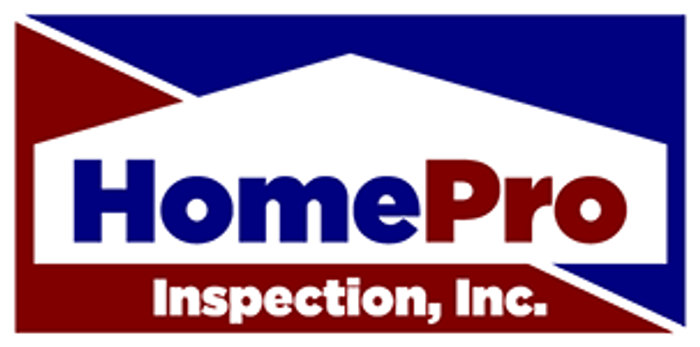

.jpg)
.jpg)
.png)
p20(5)p20(2).png)
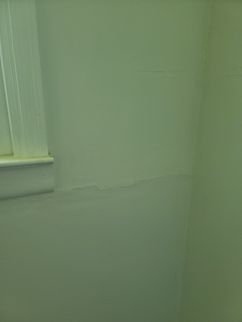
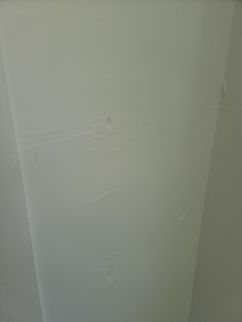
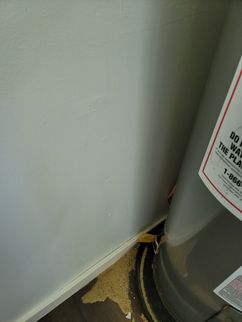

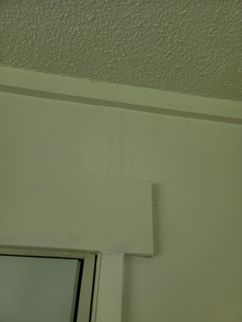

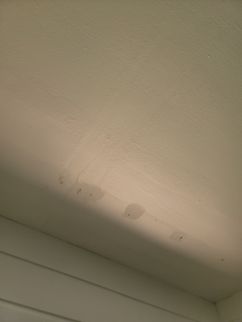

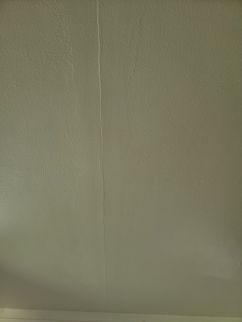


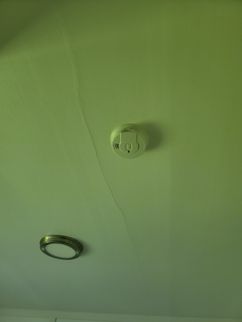
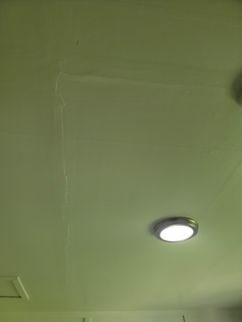

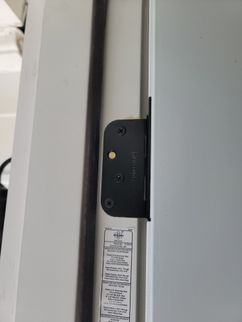
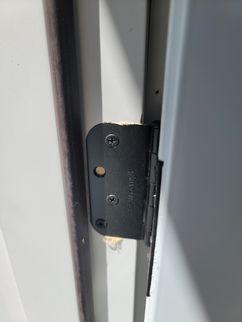


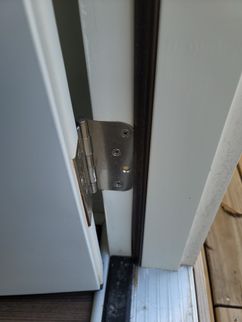
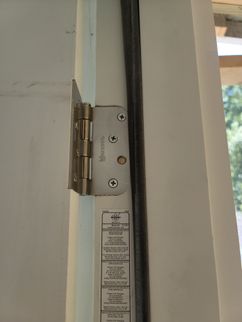
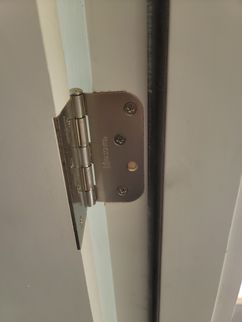

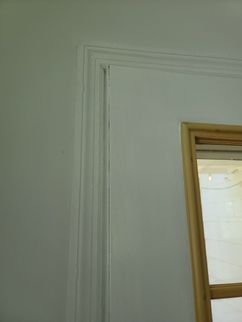

.jpg)
.jpg)


